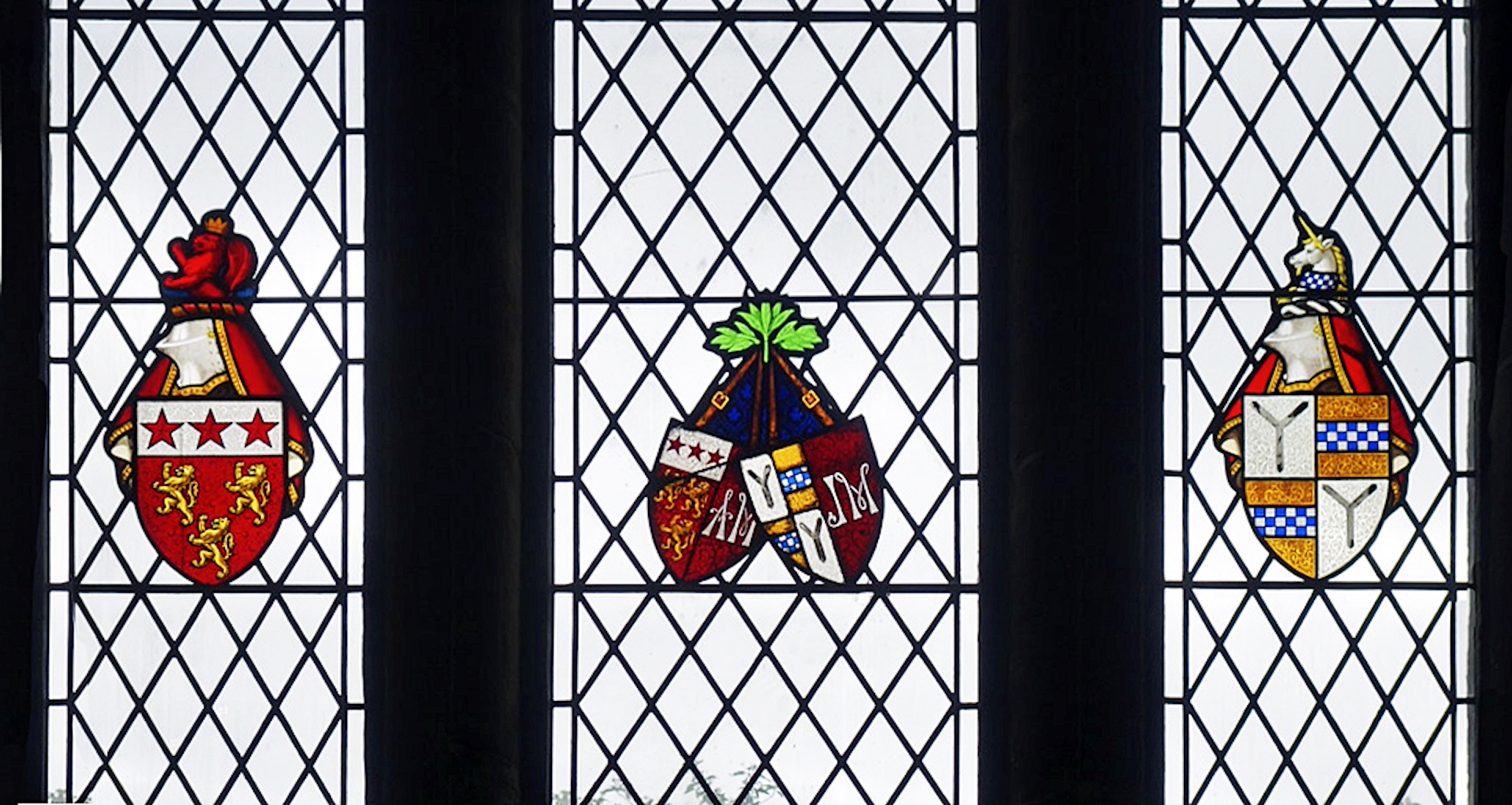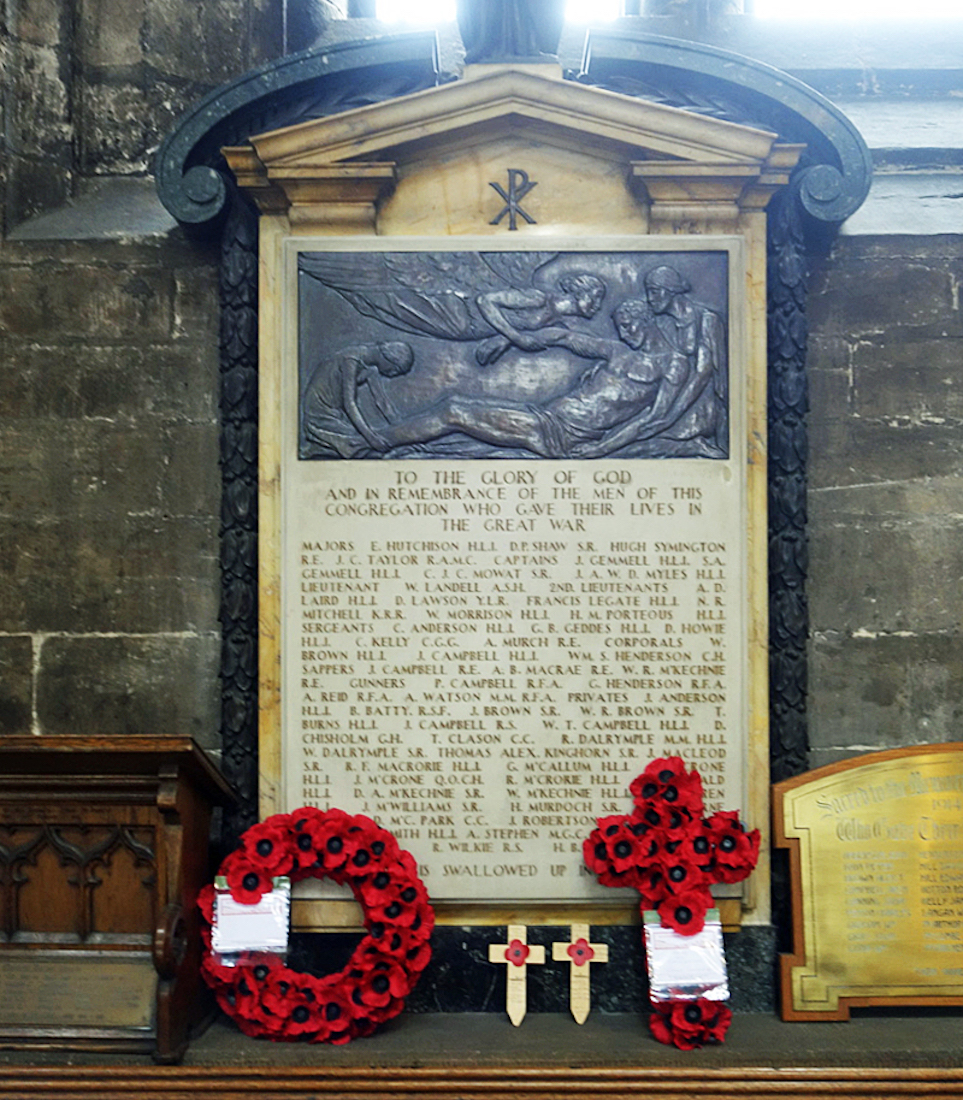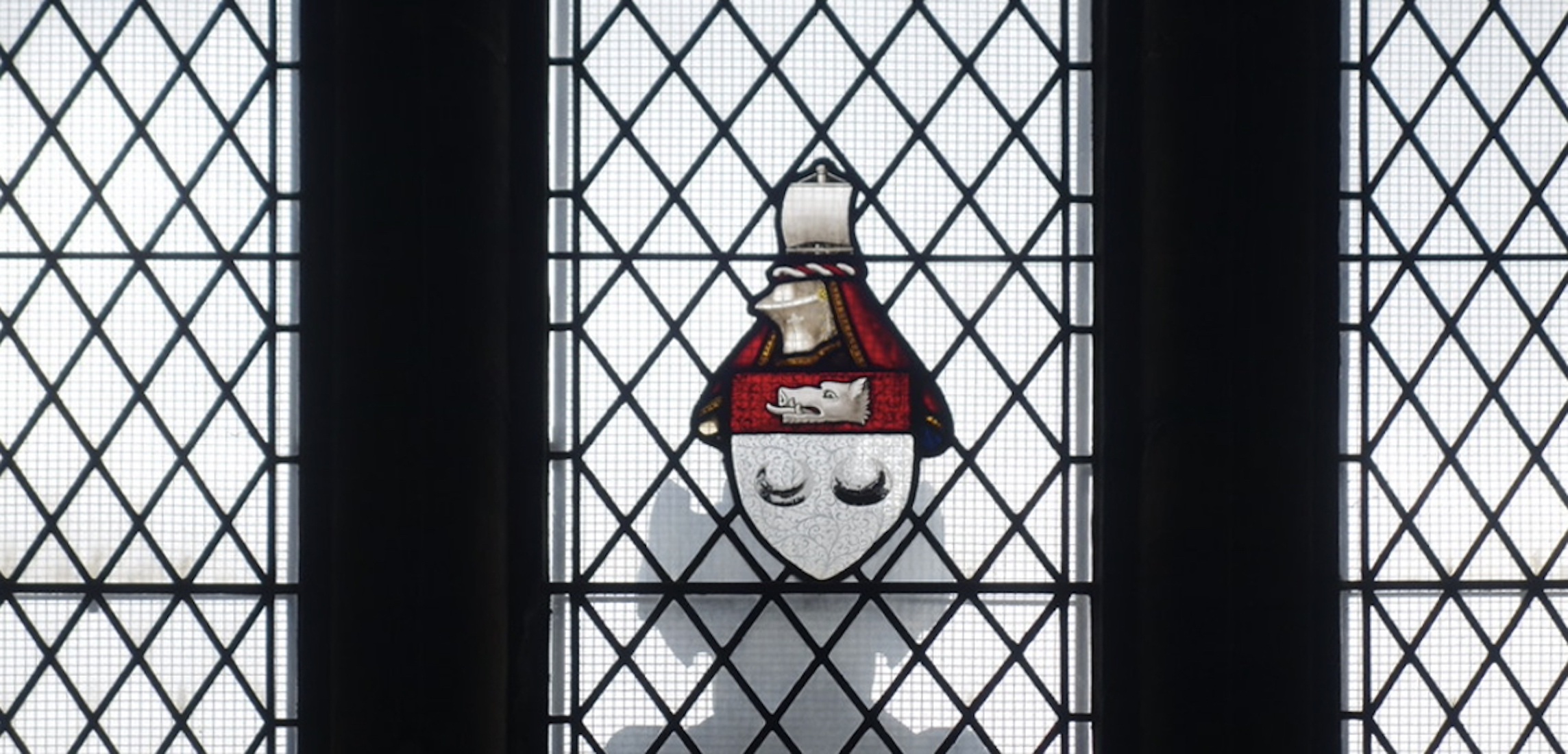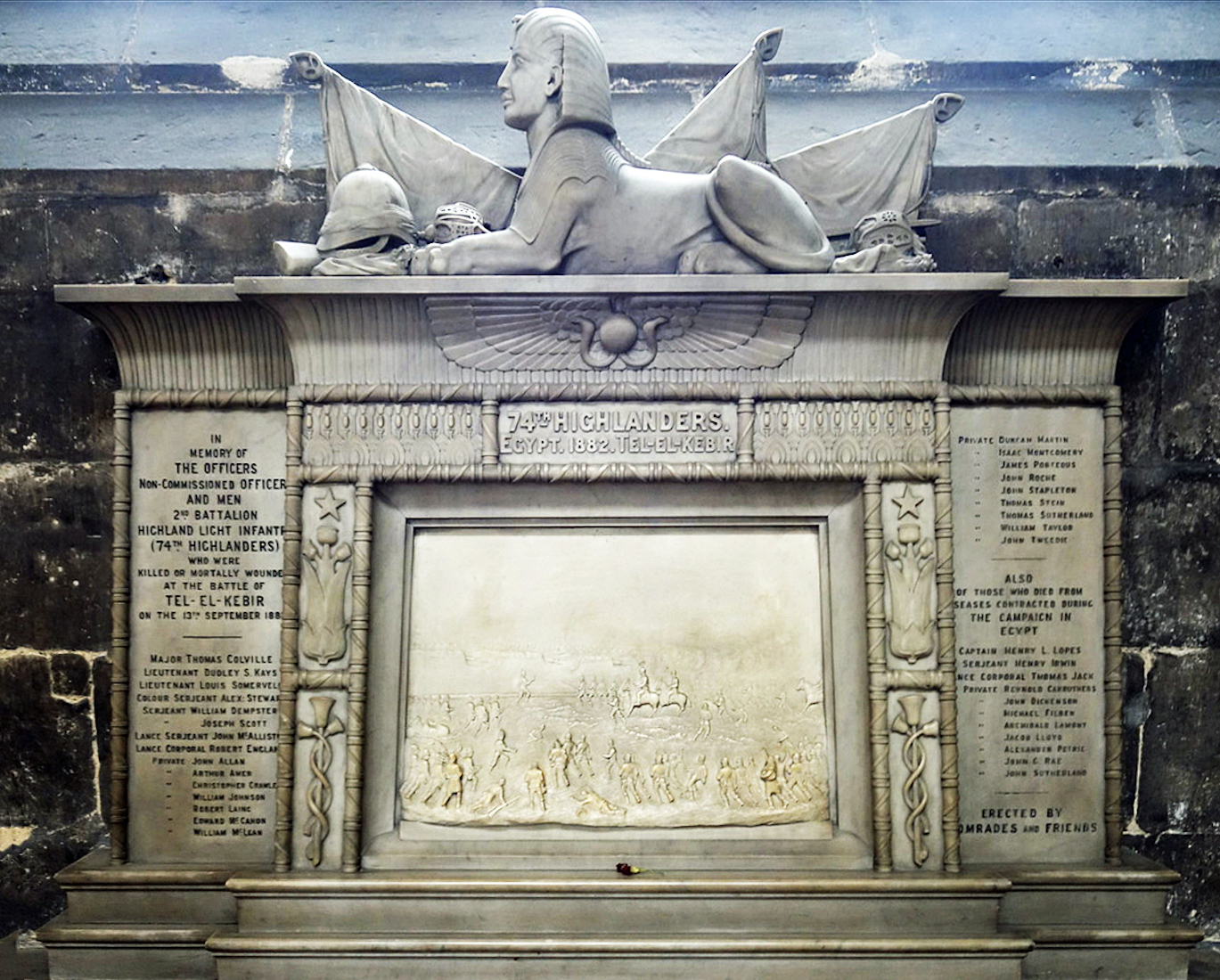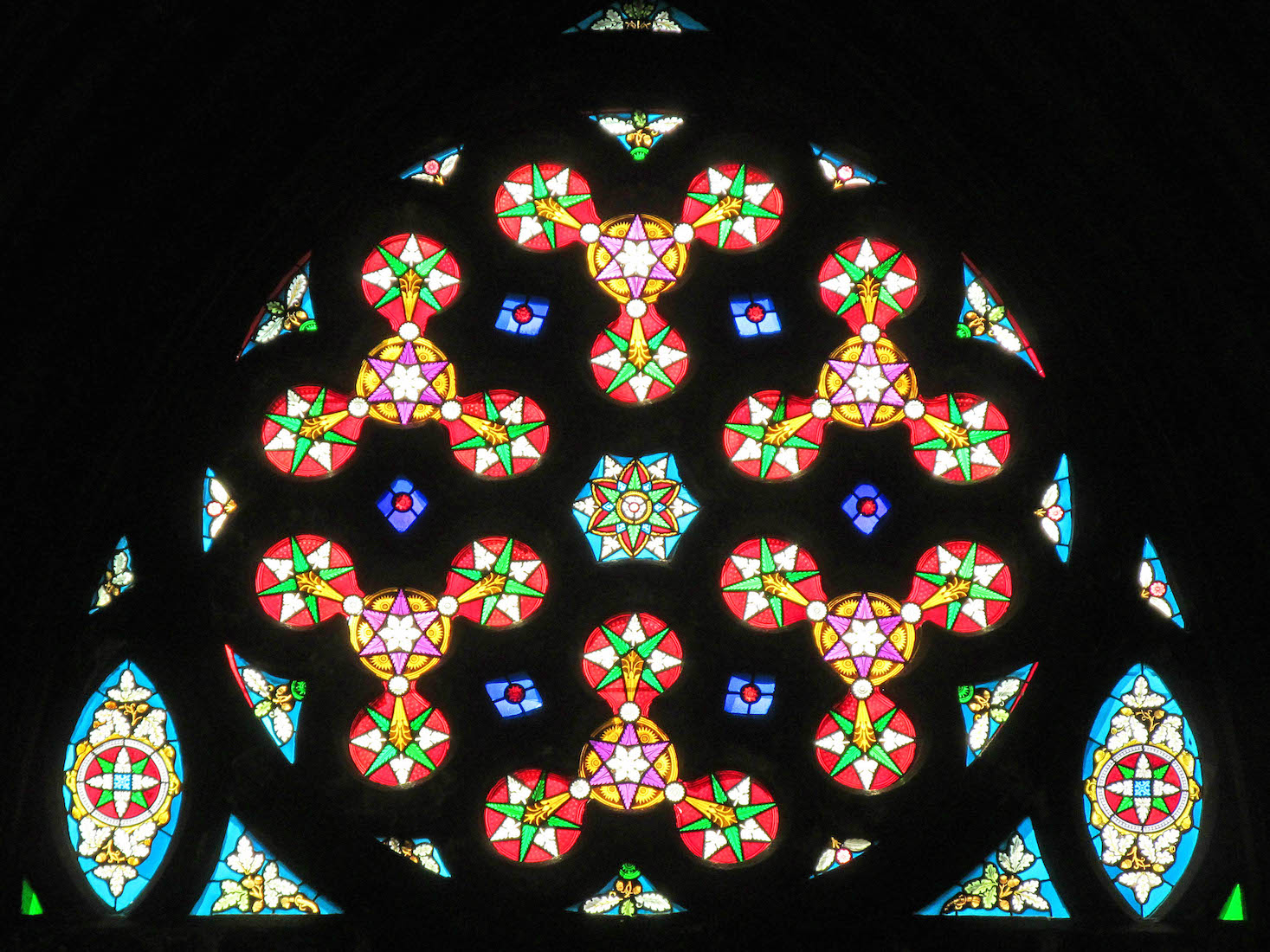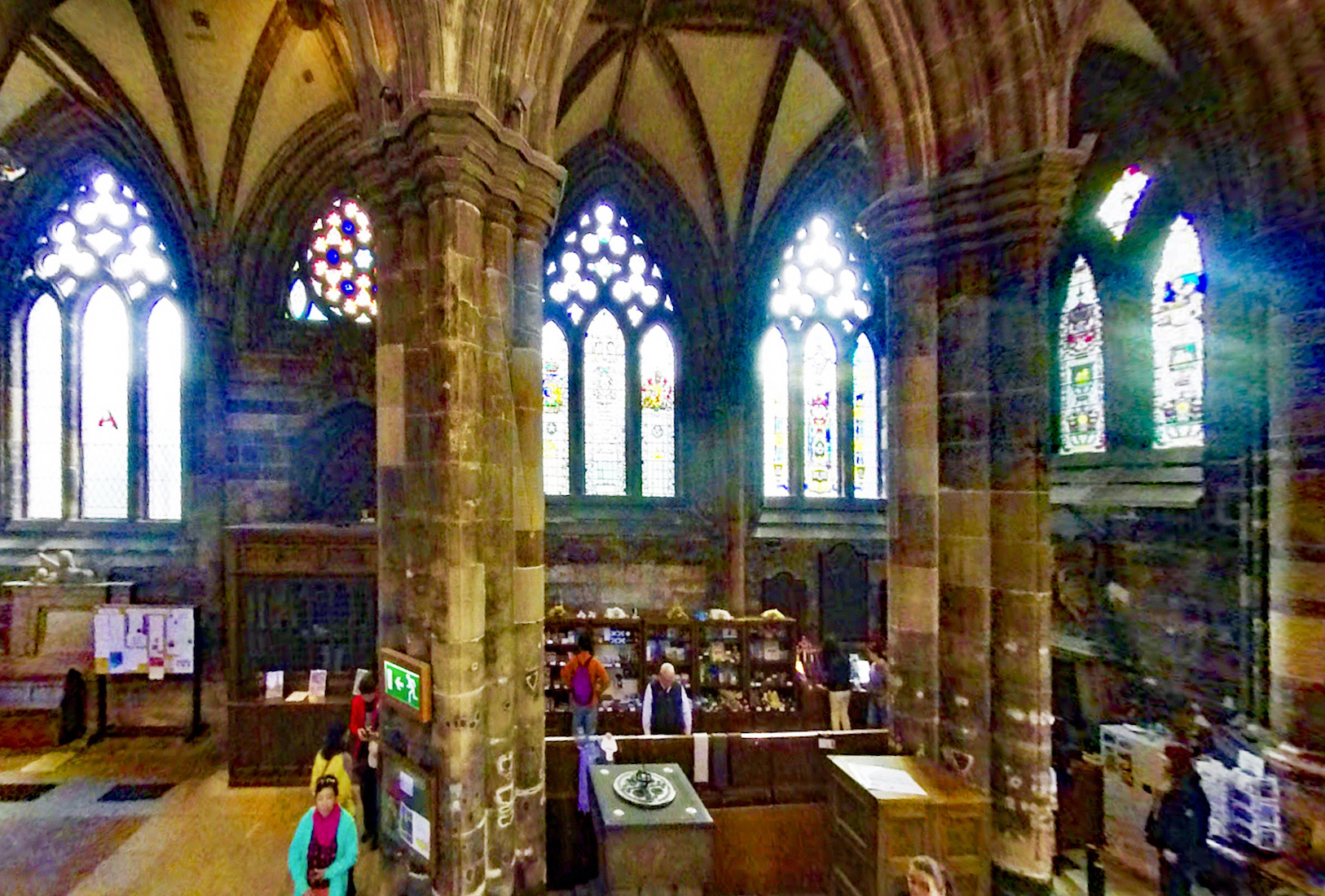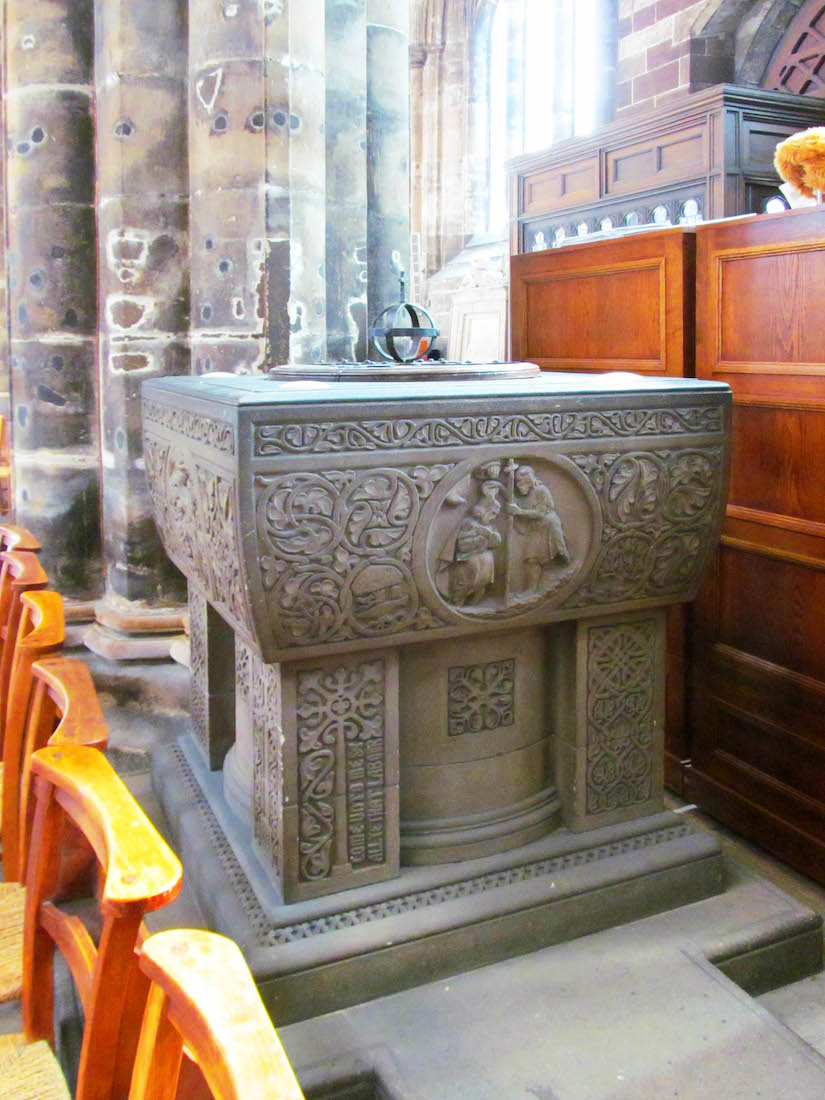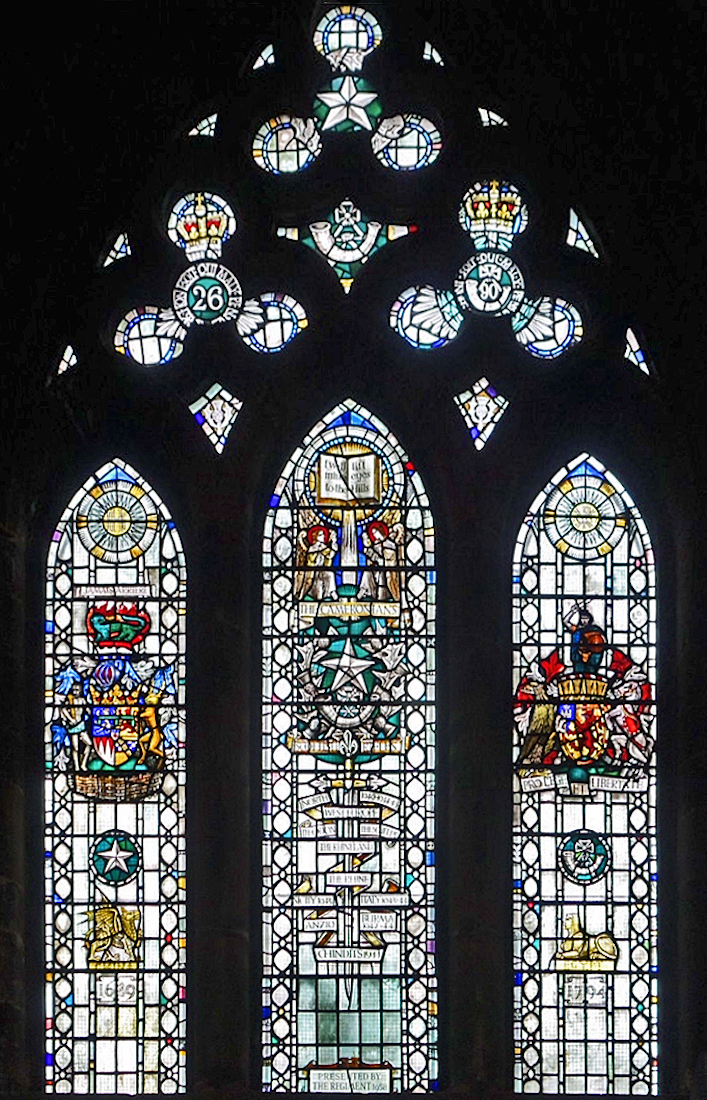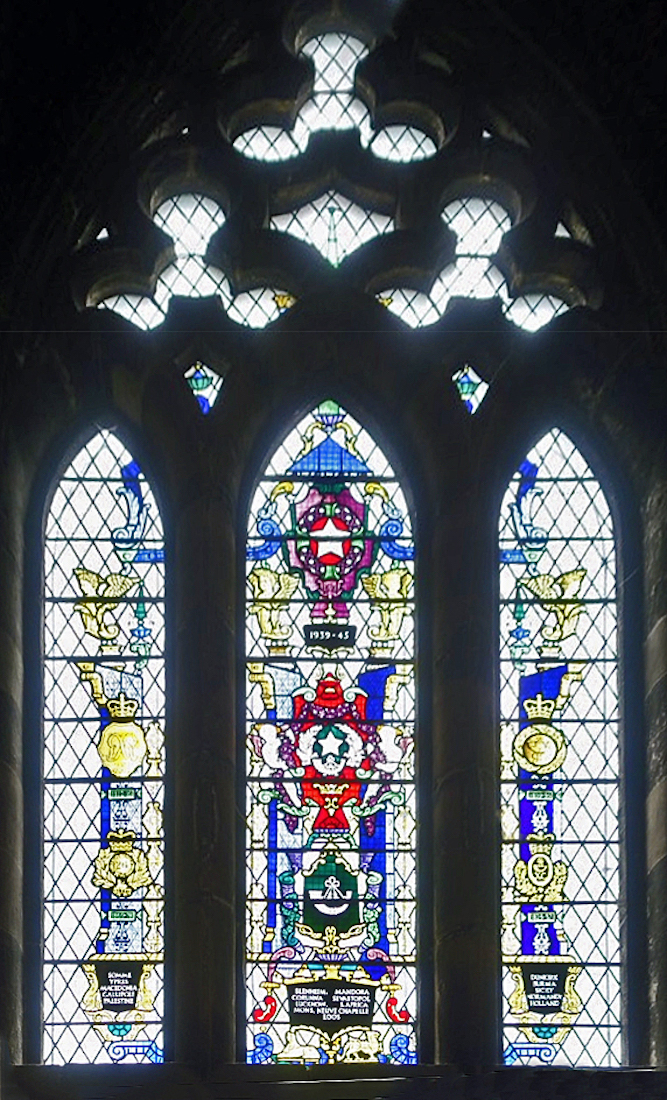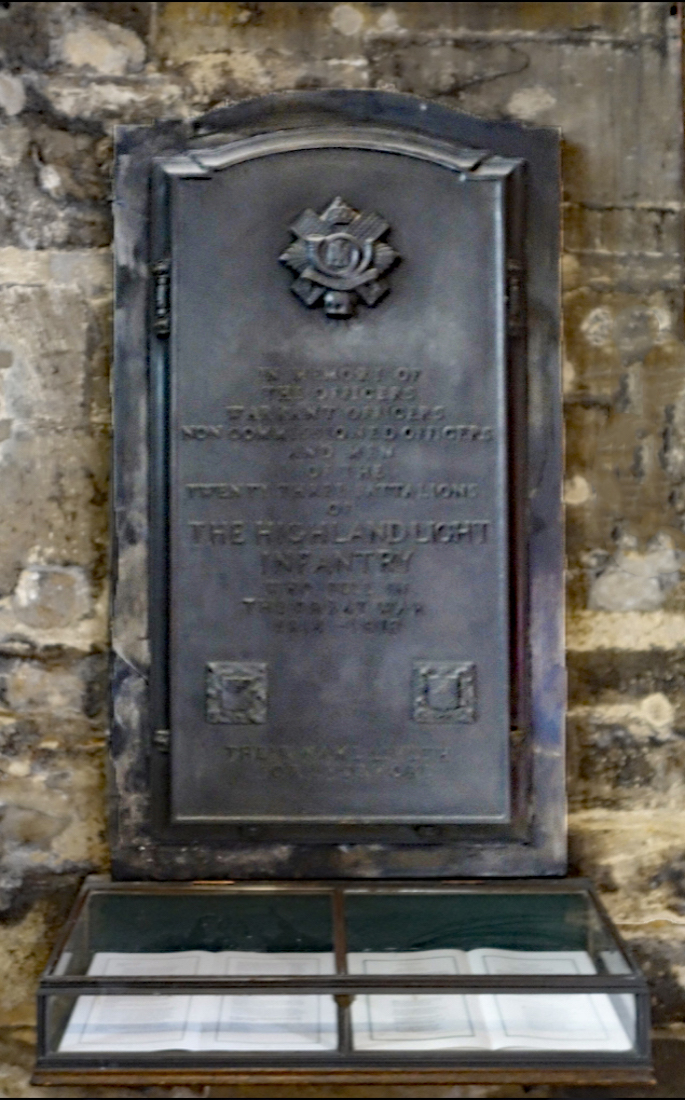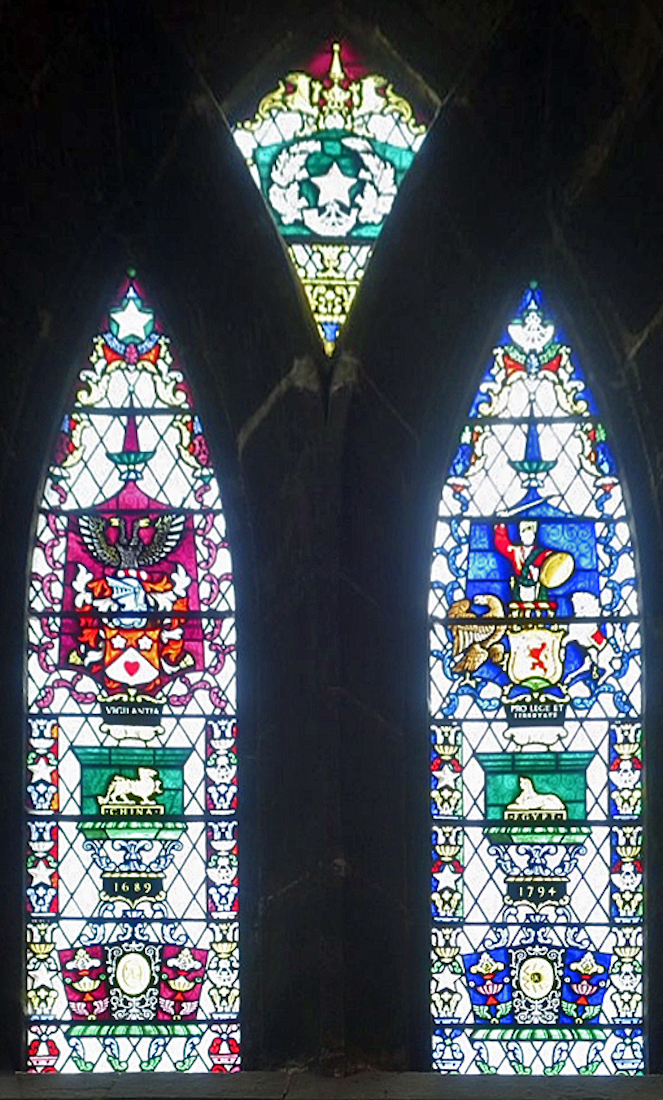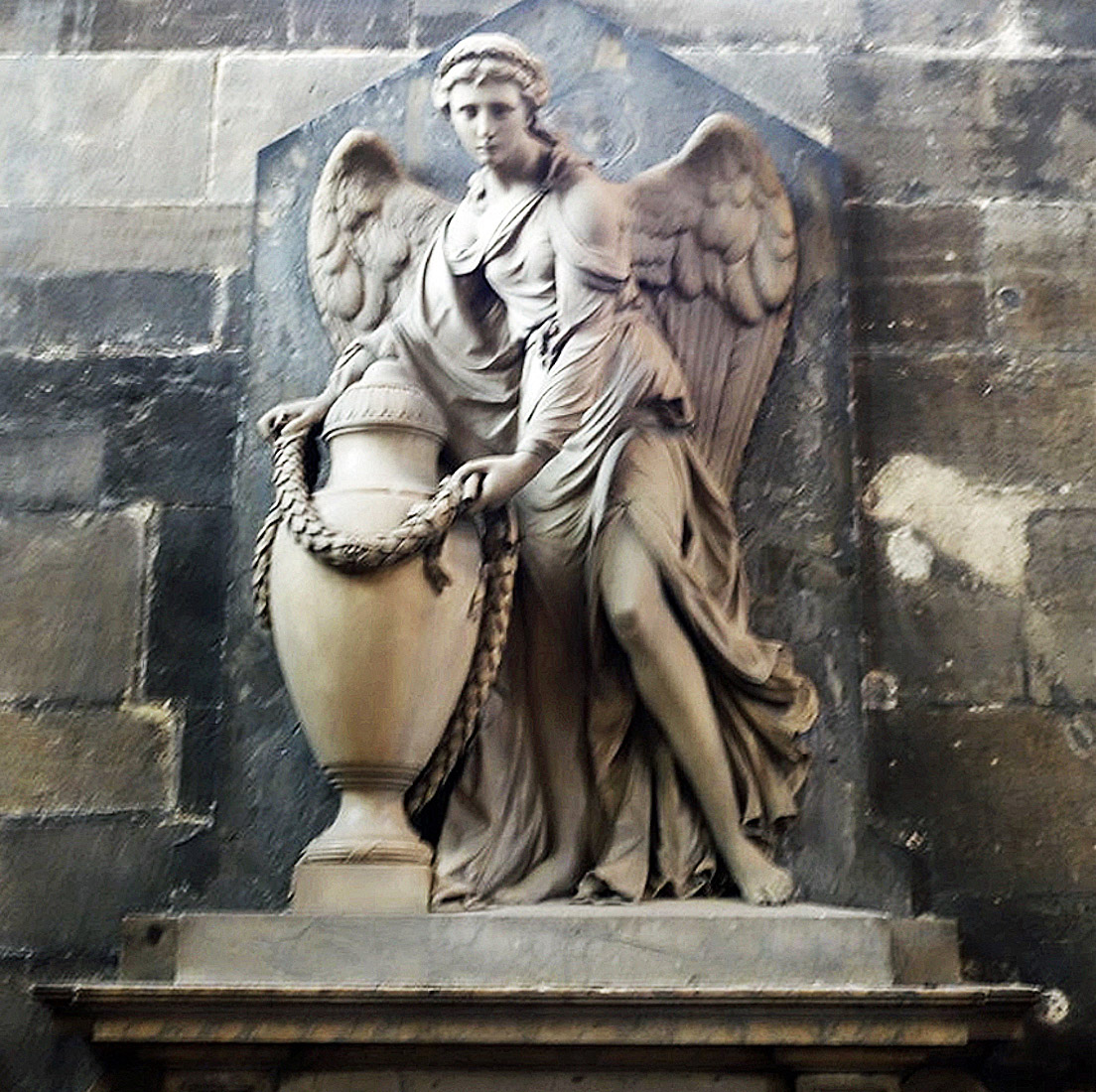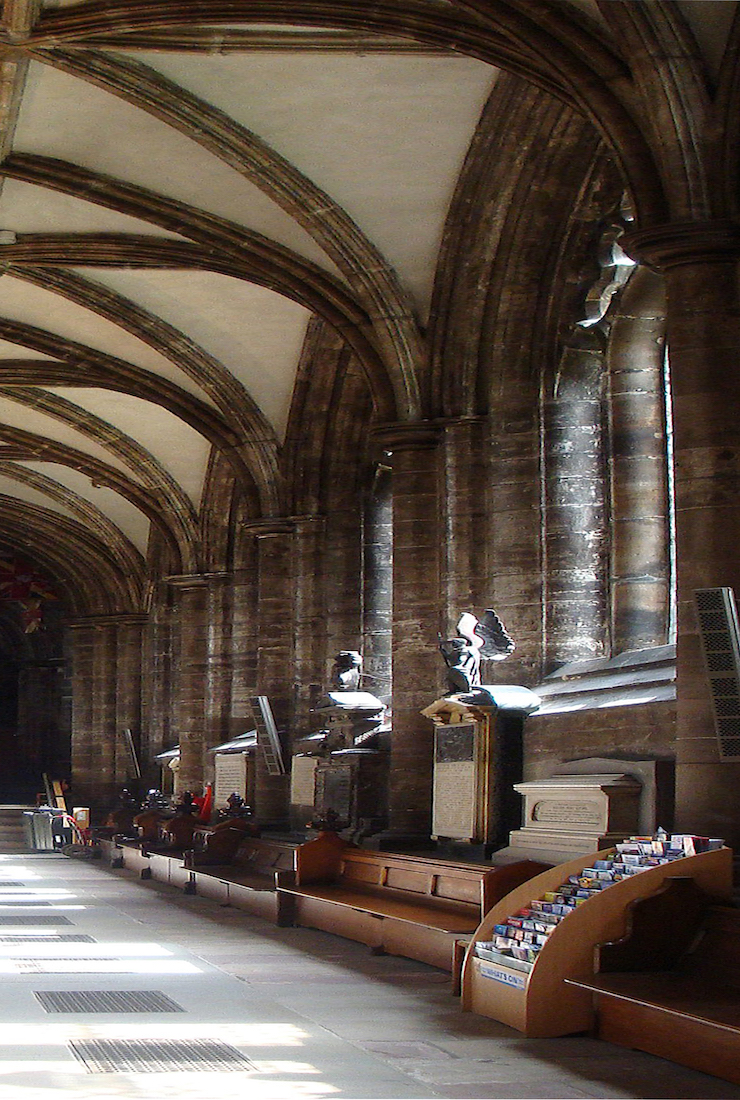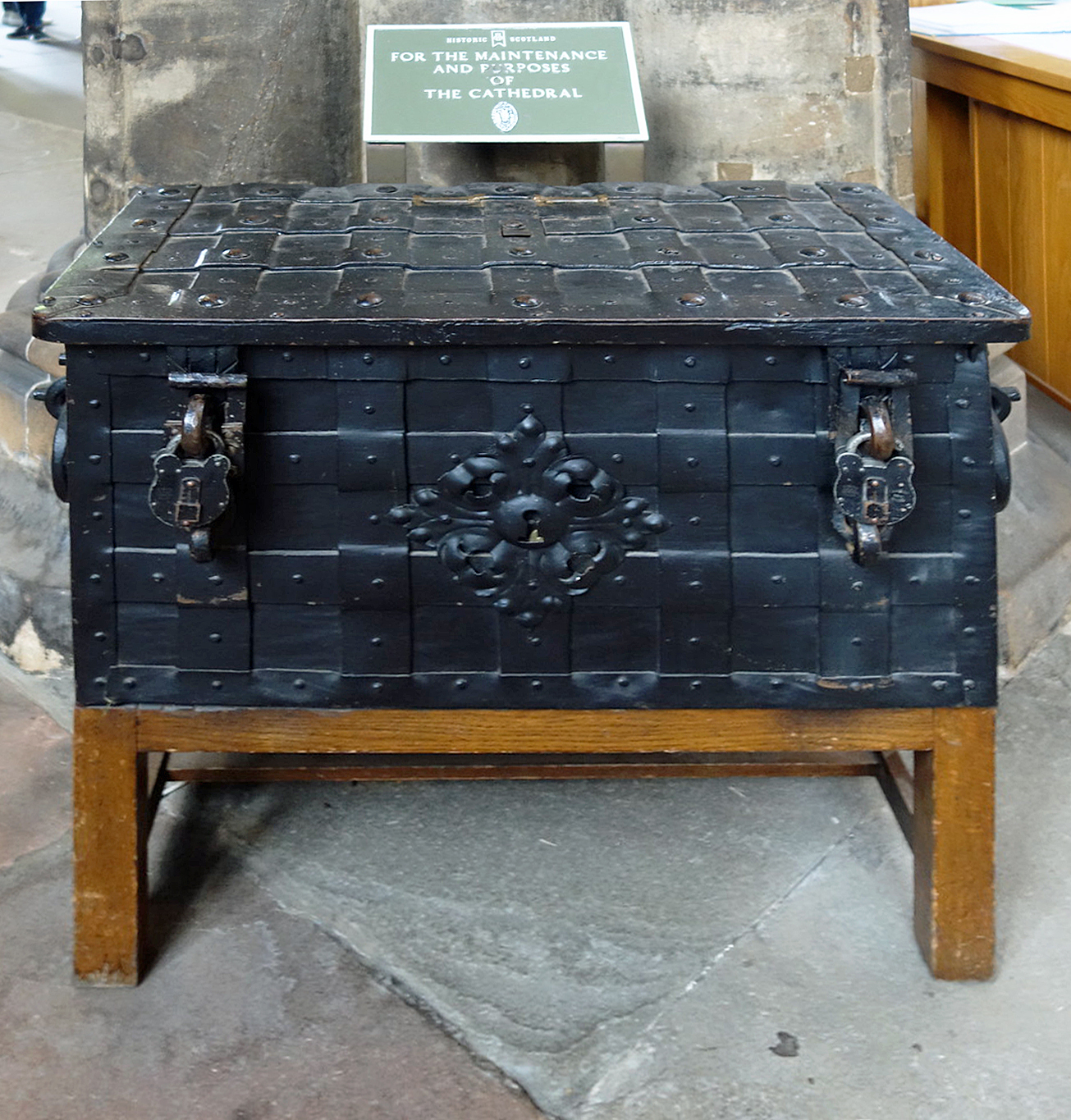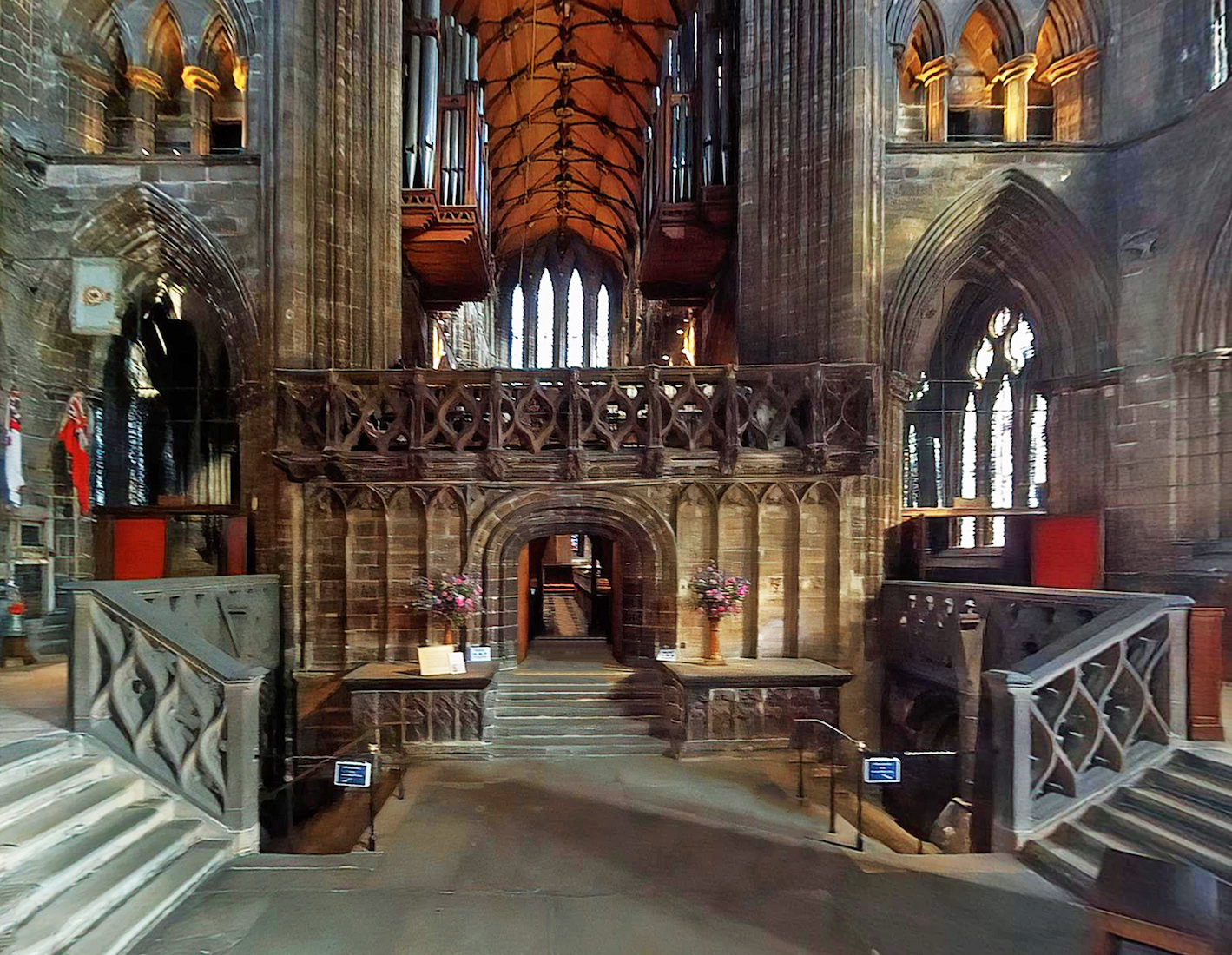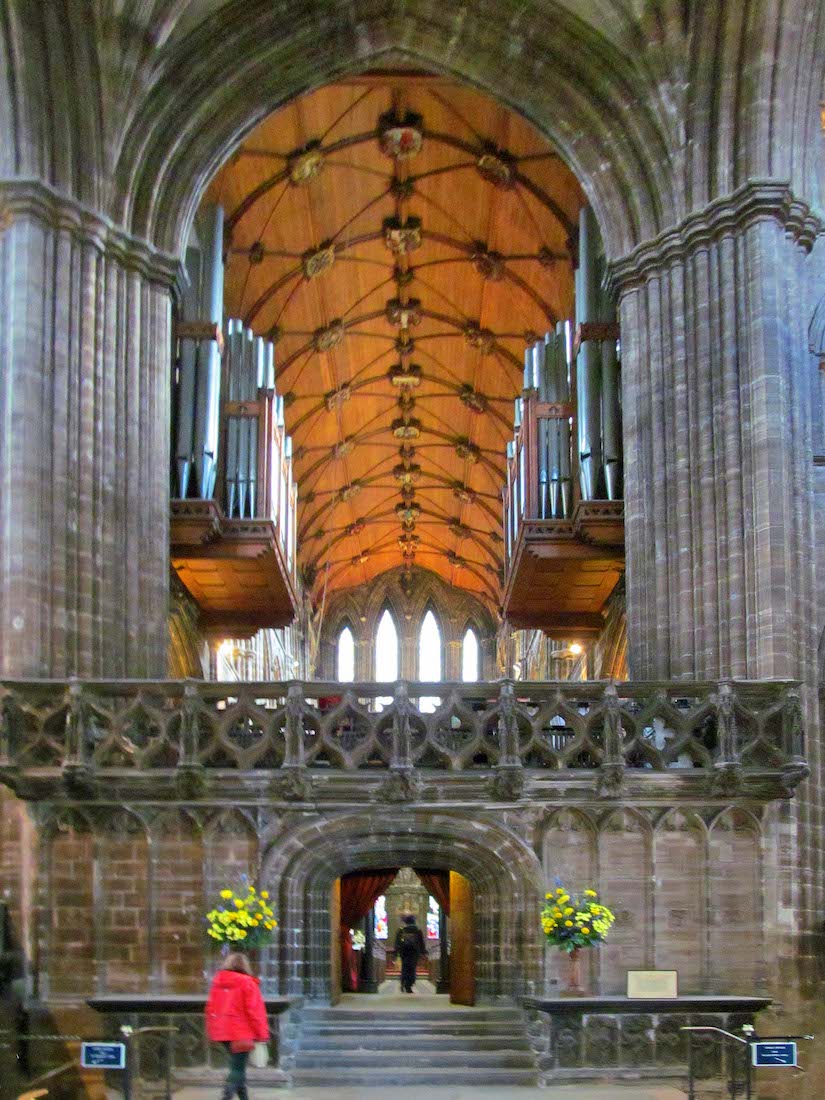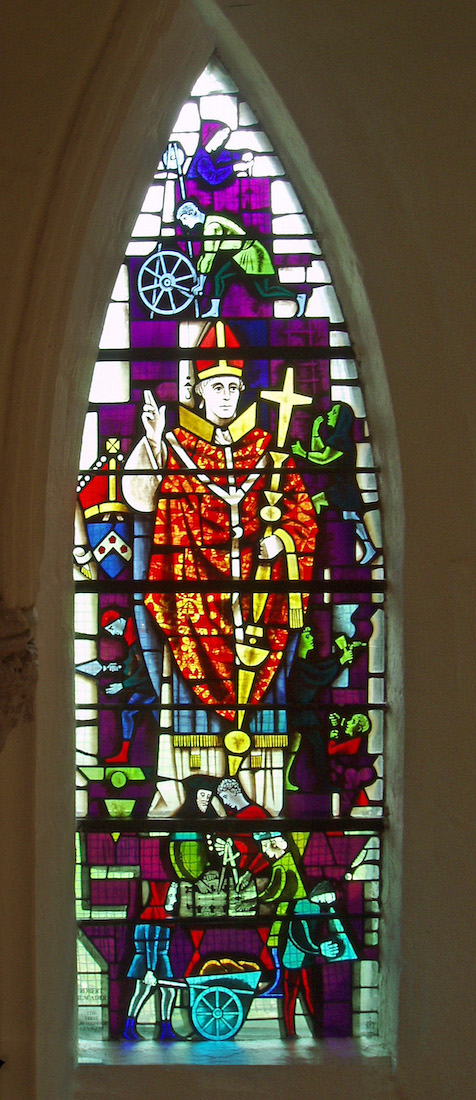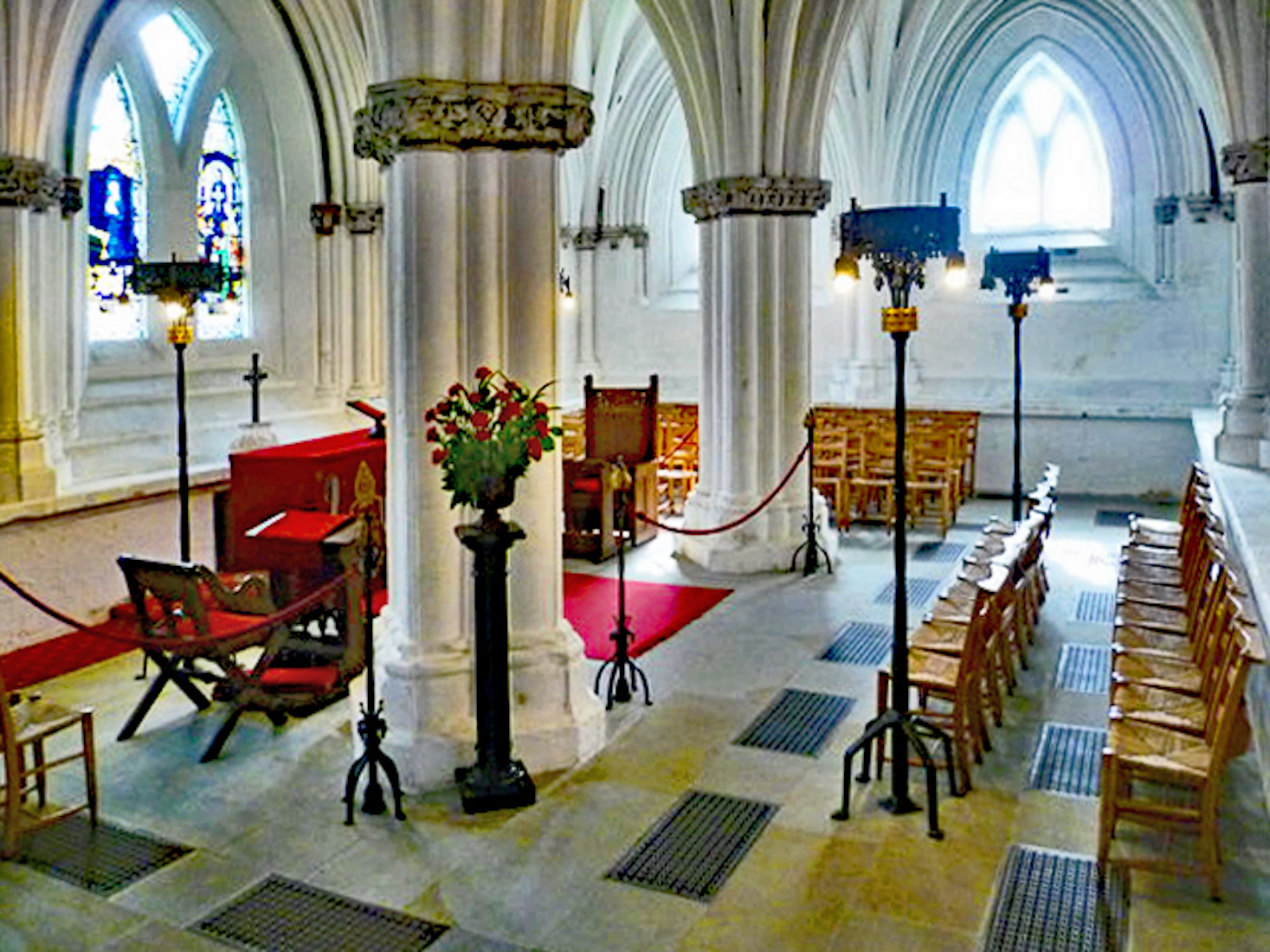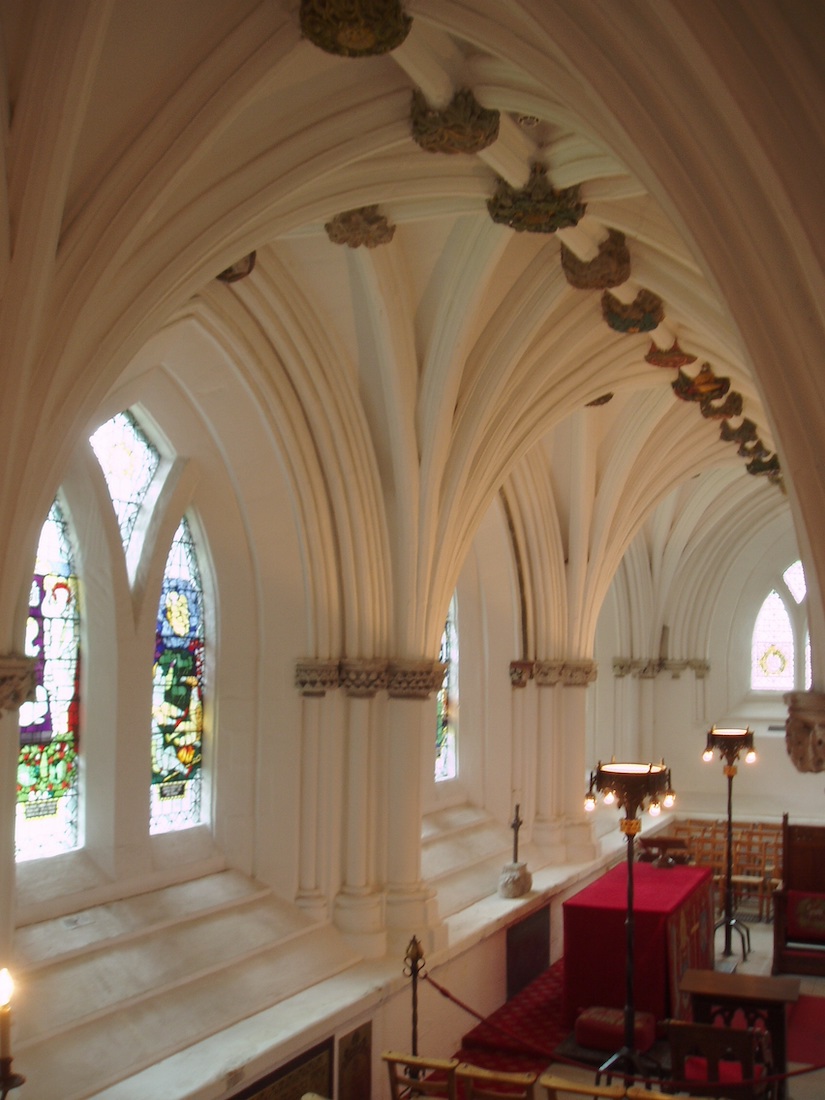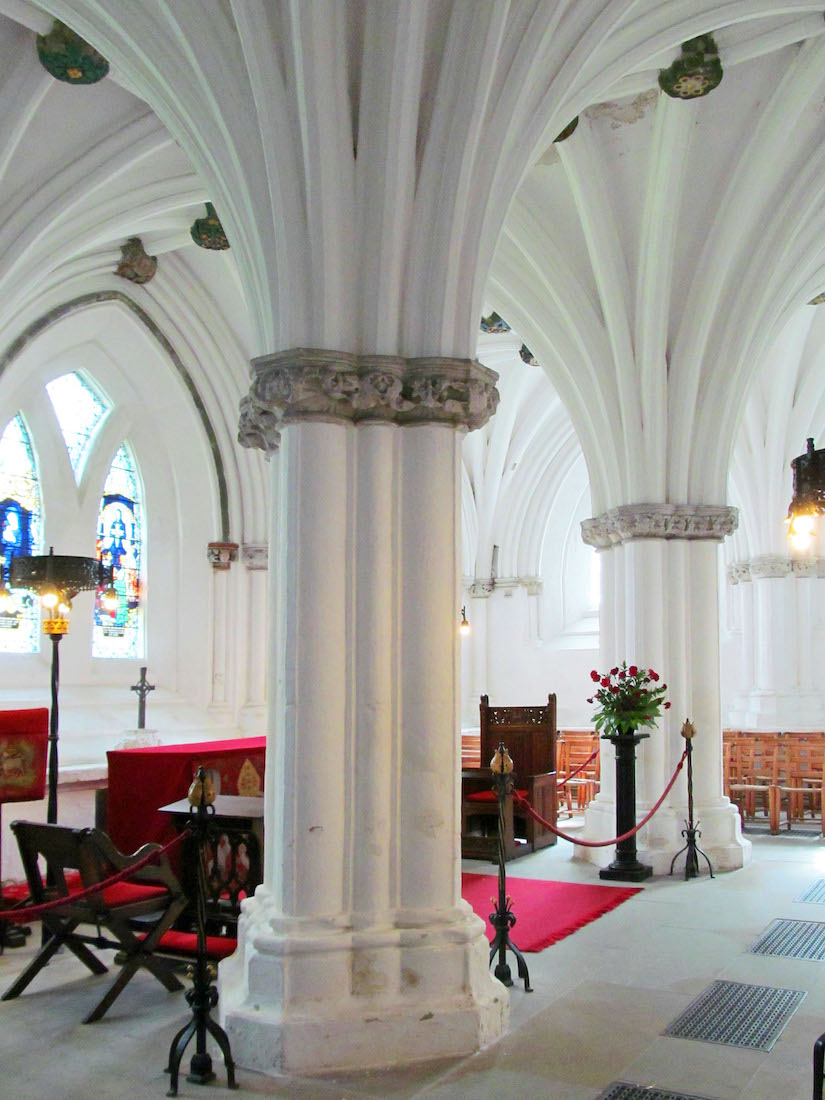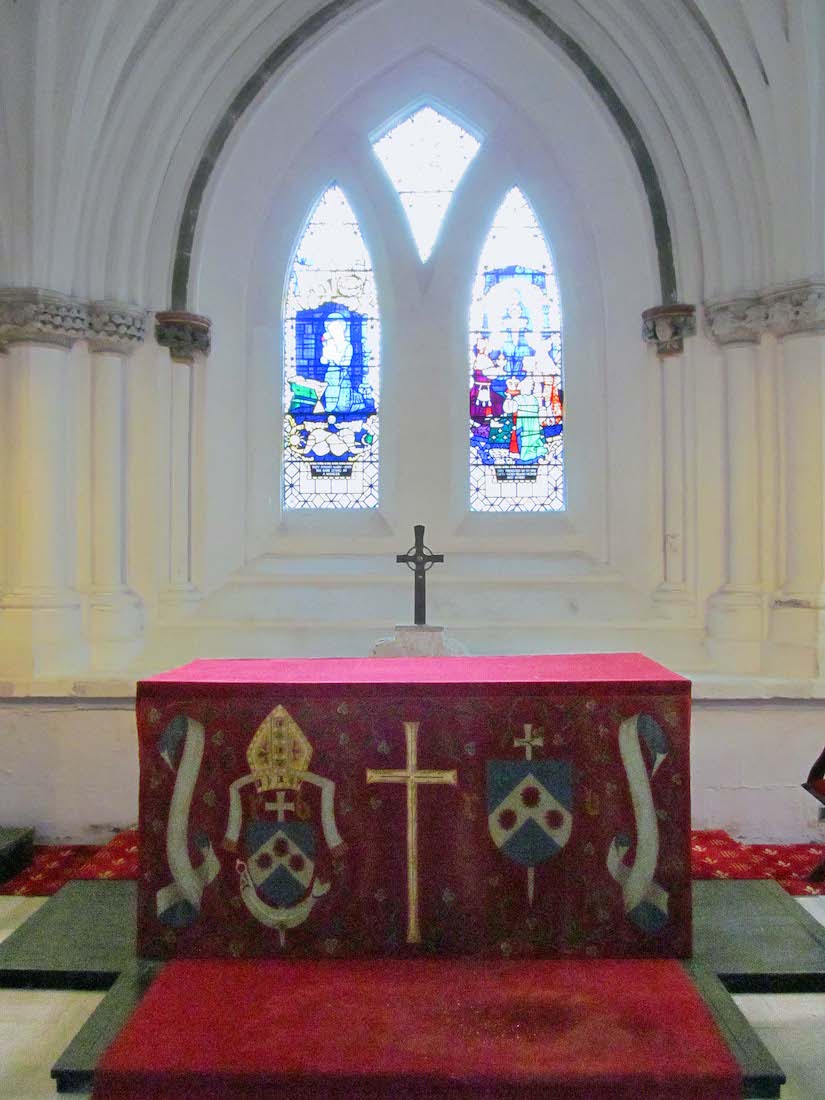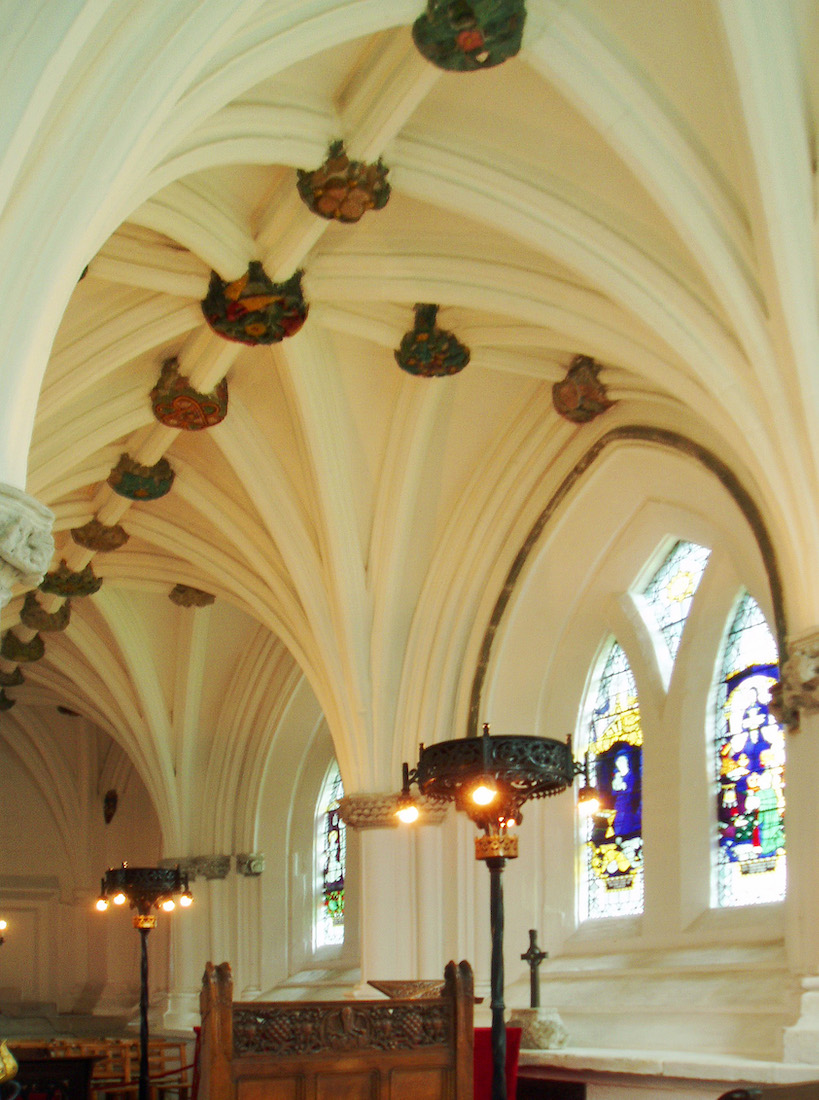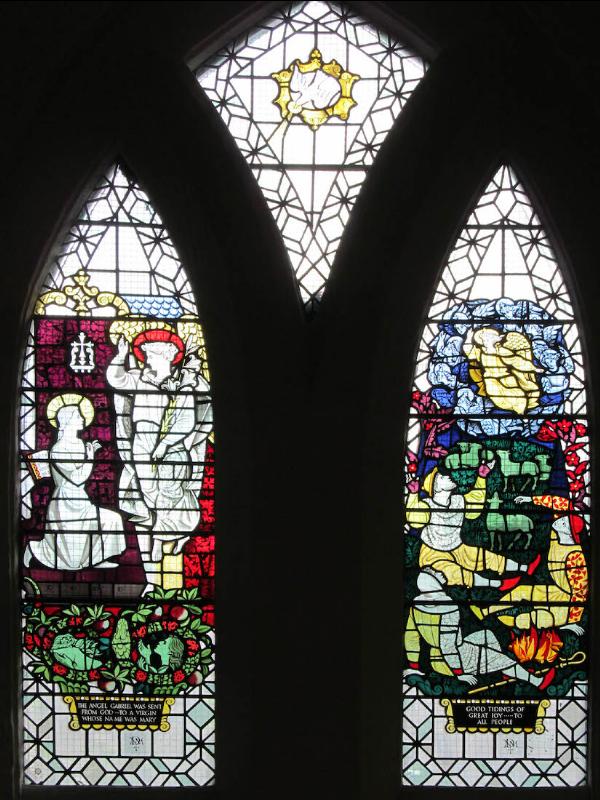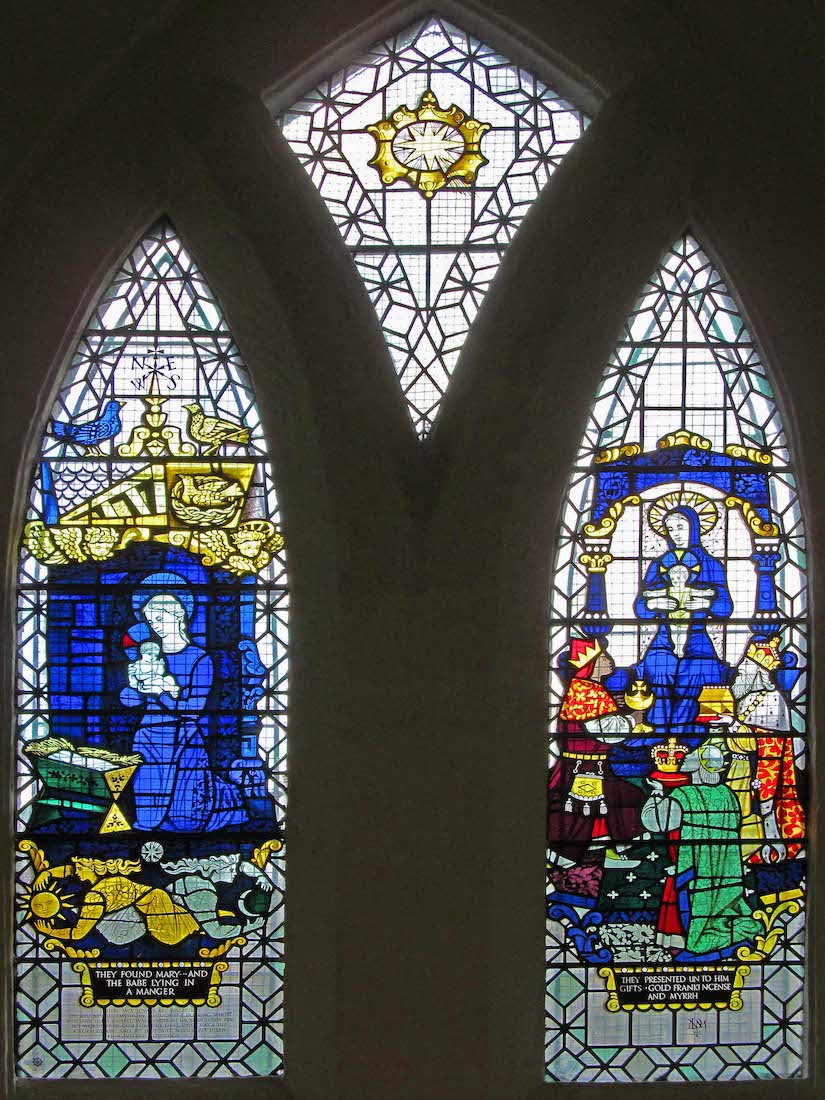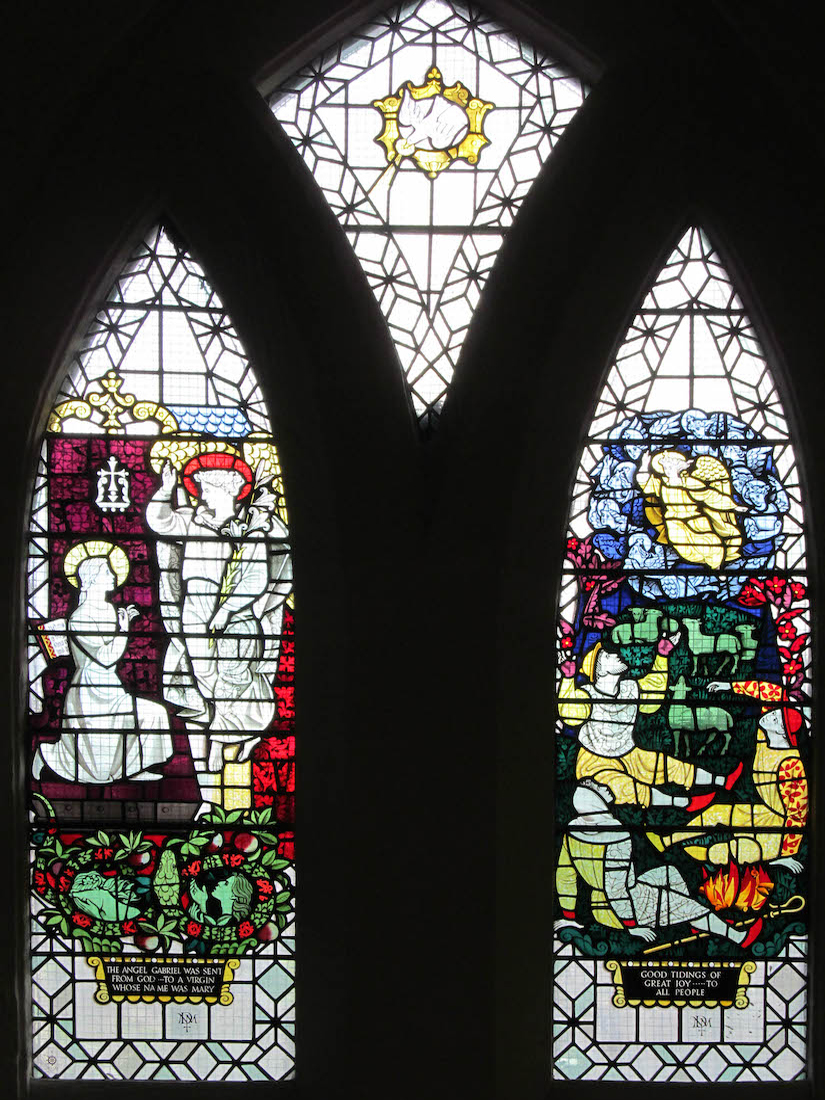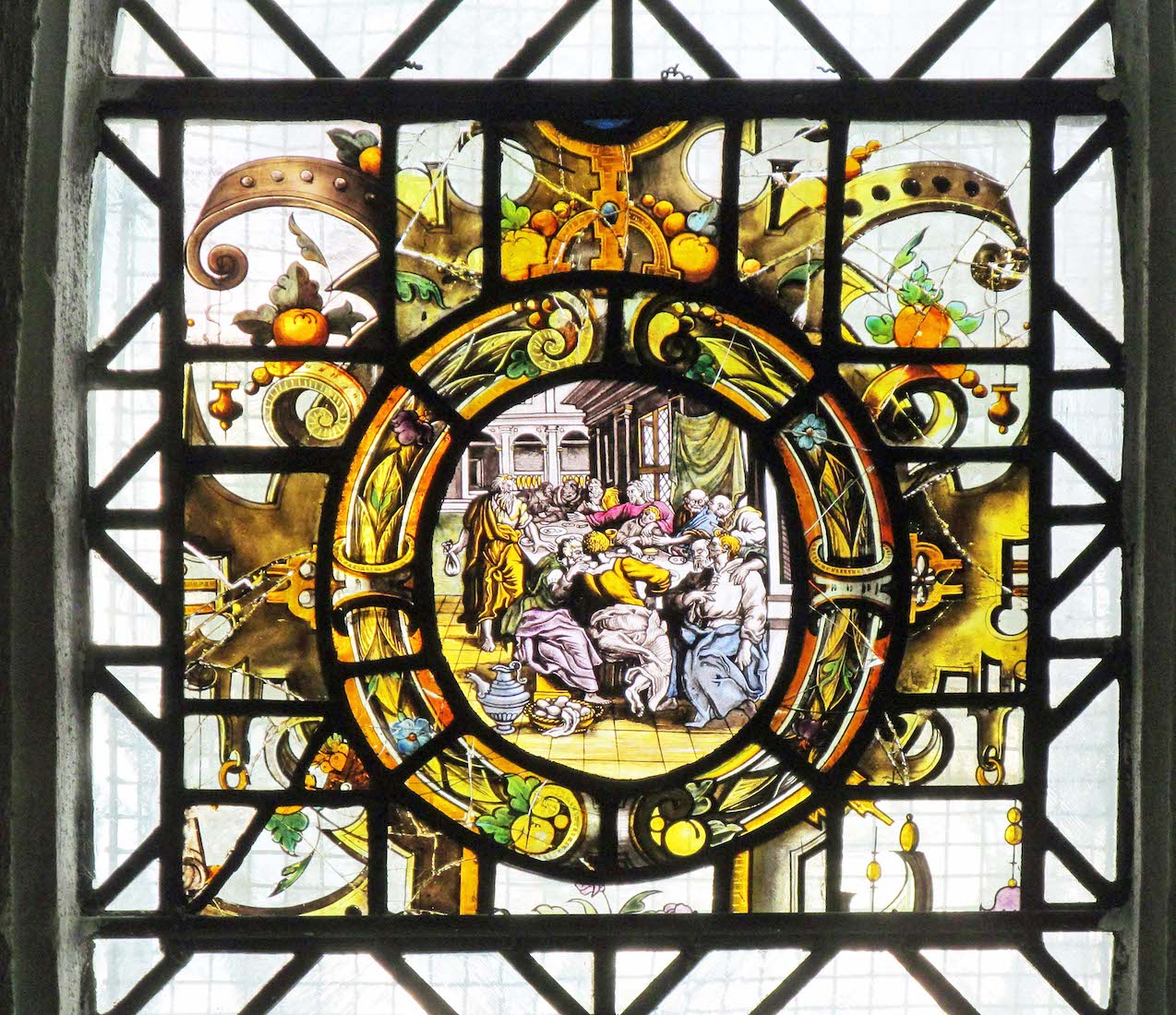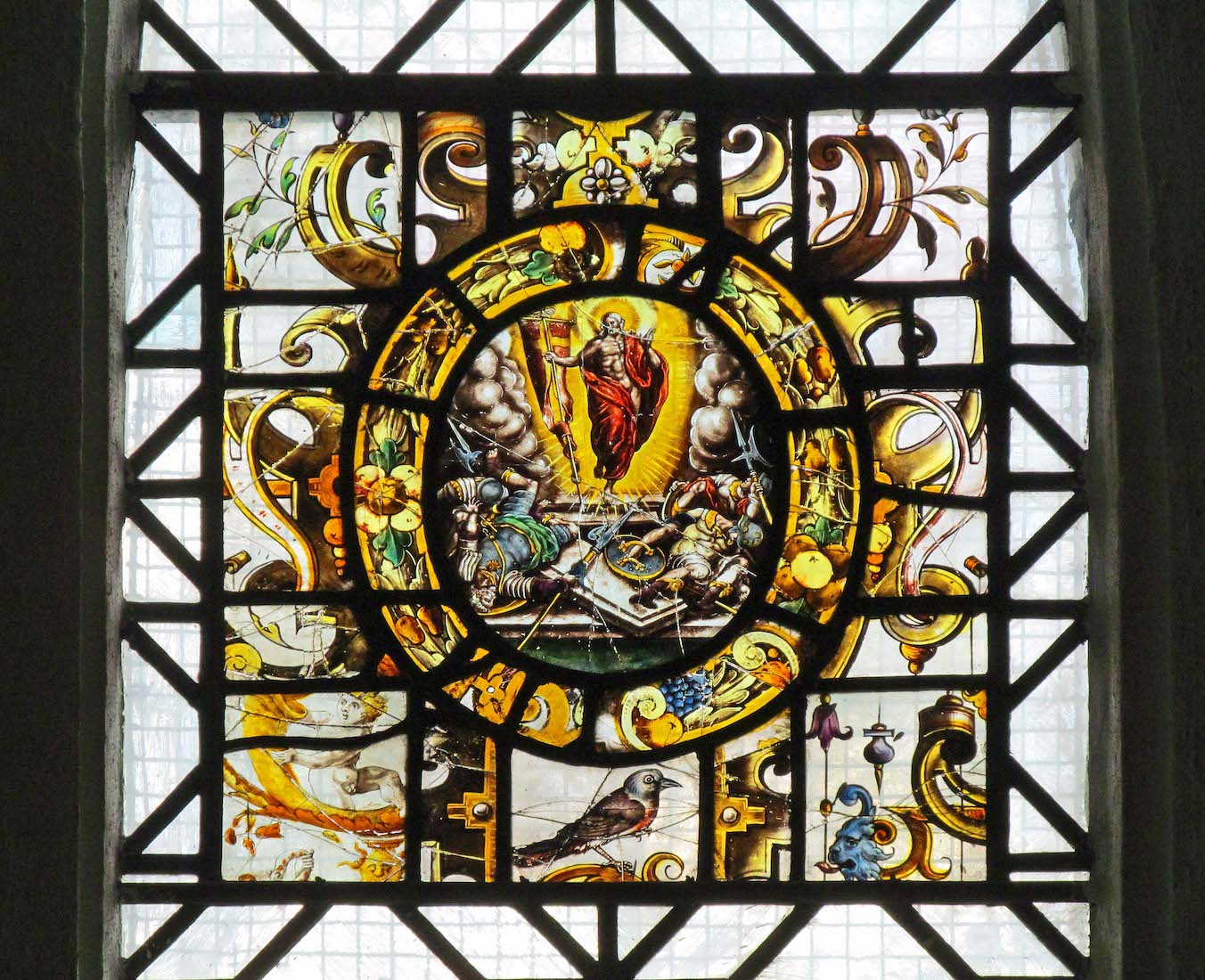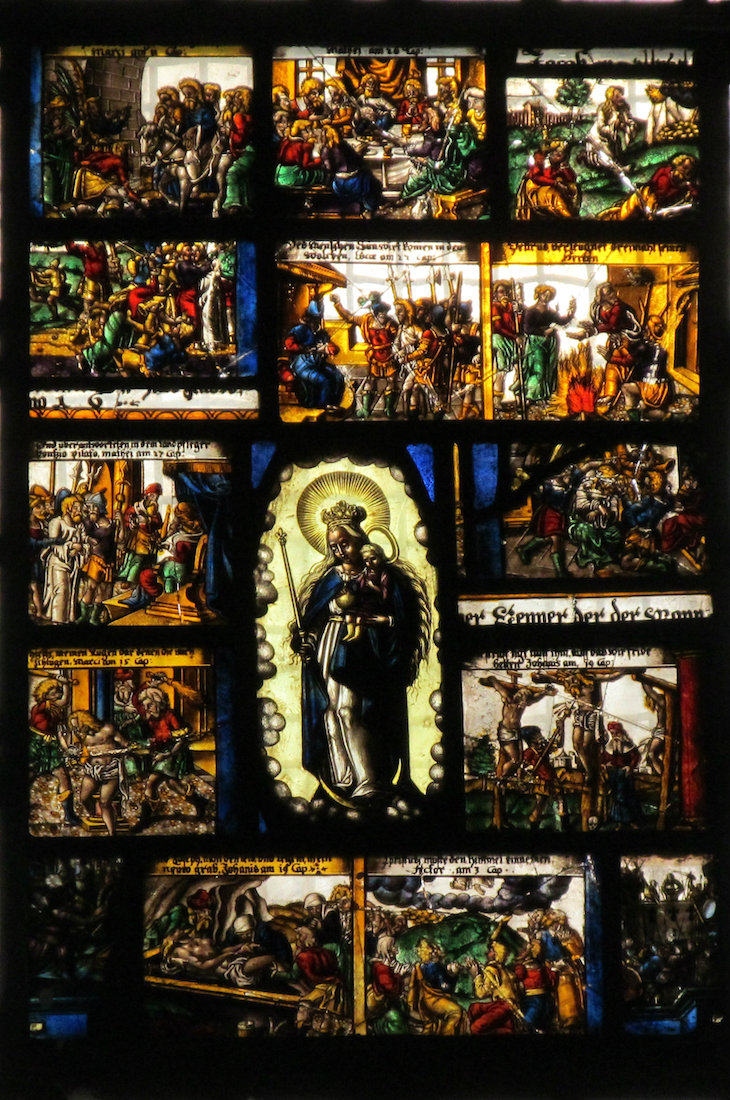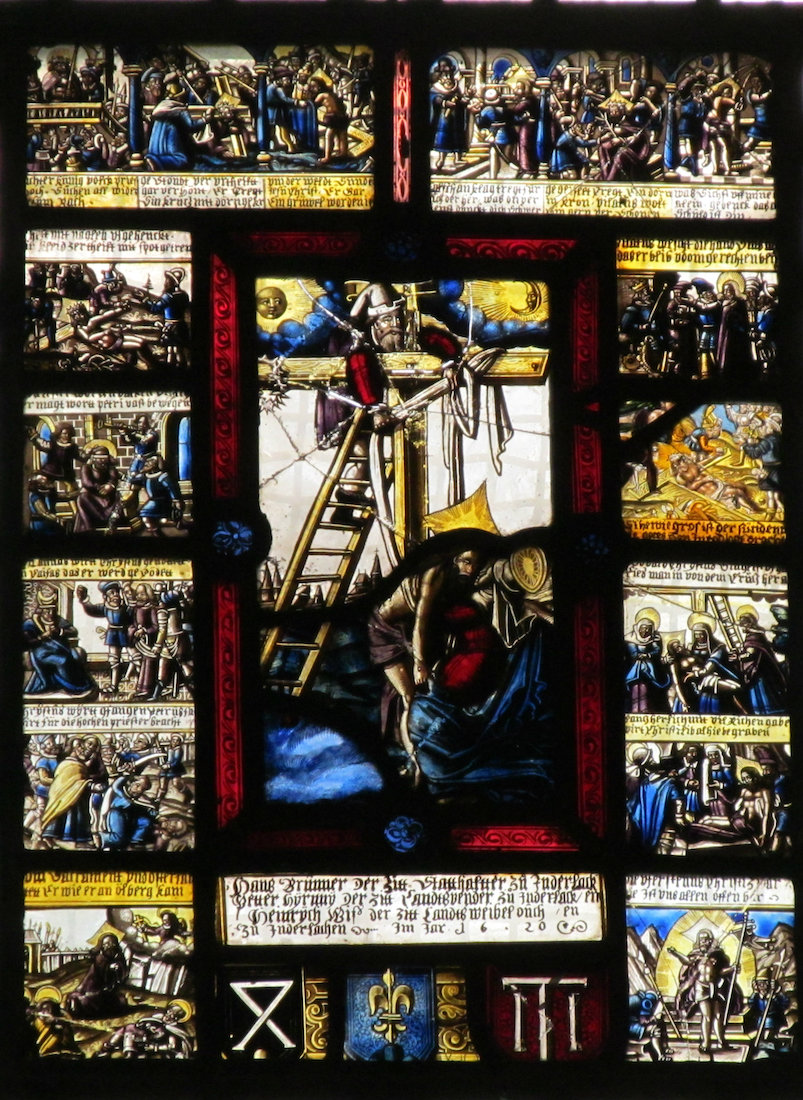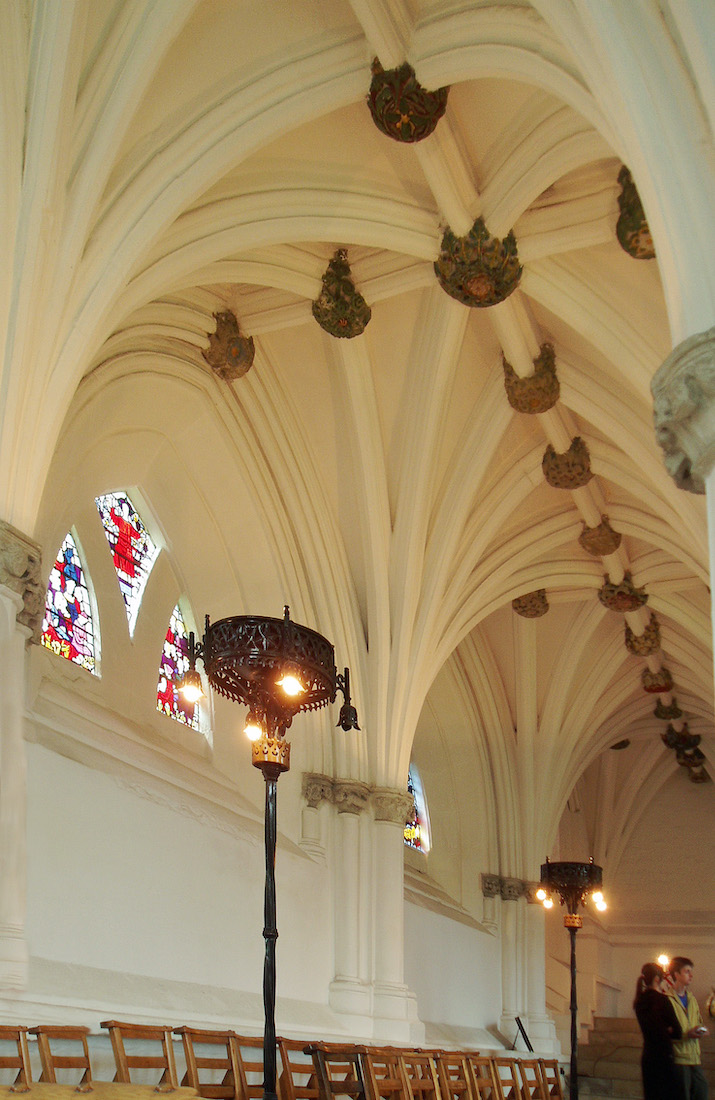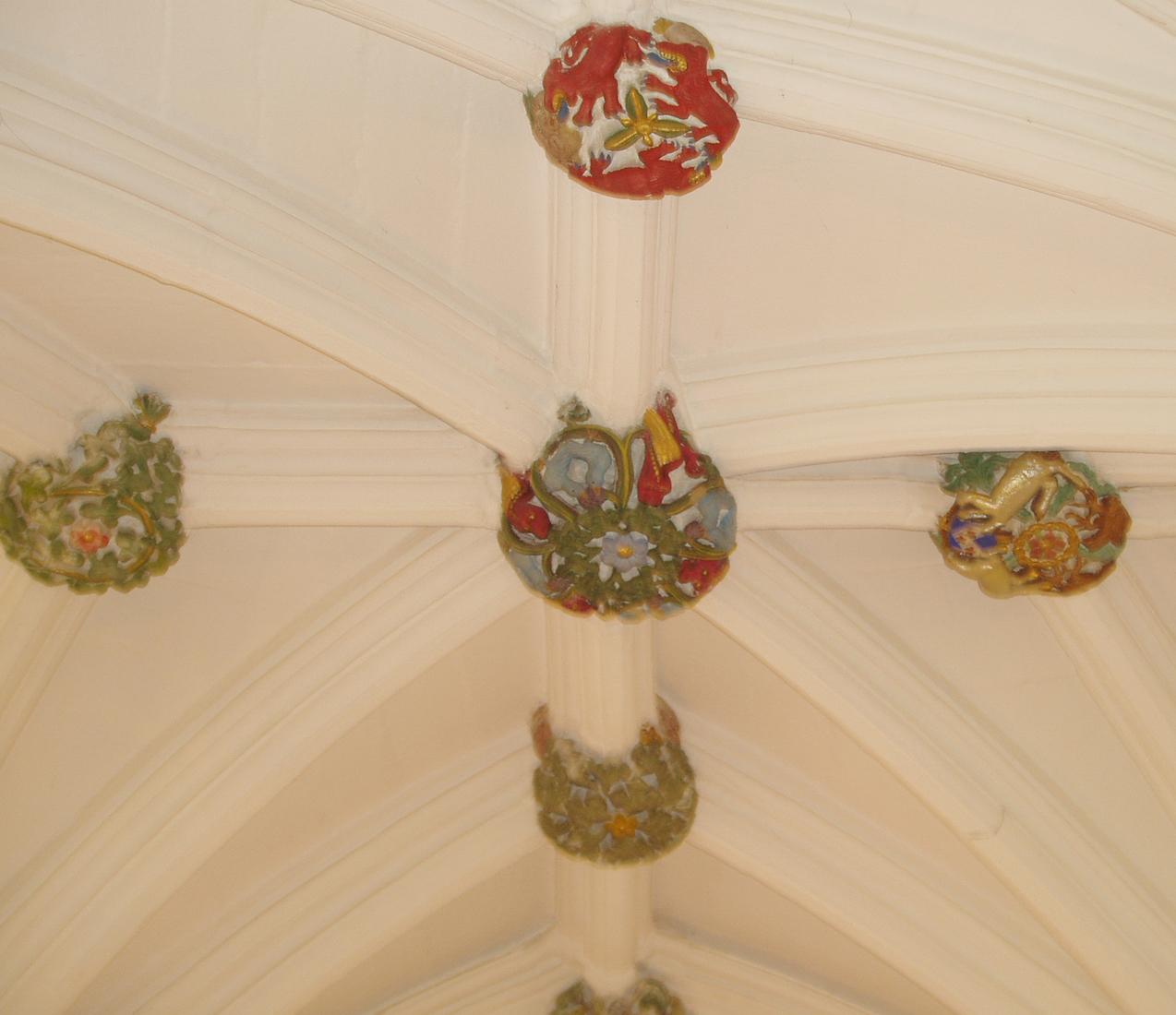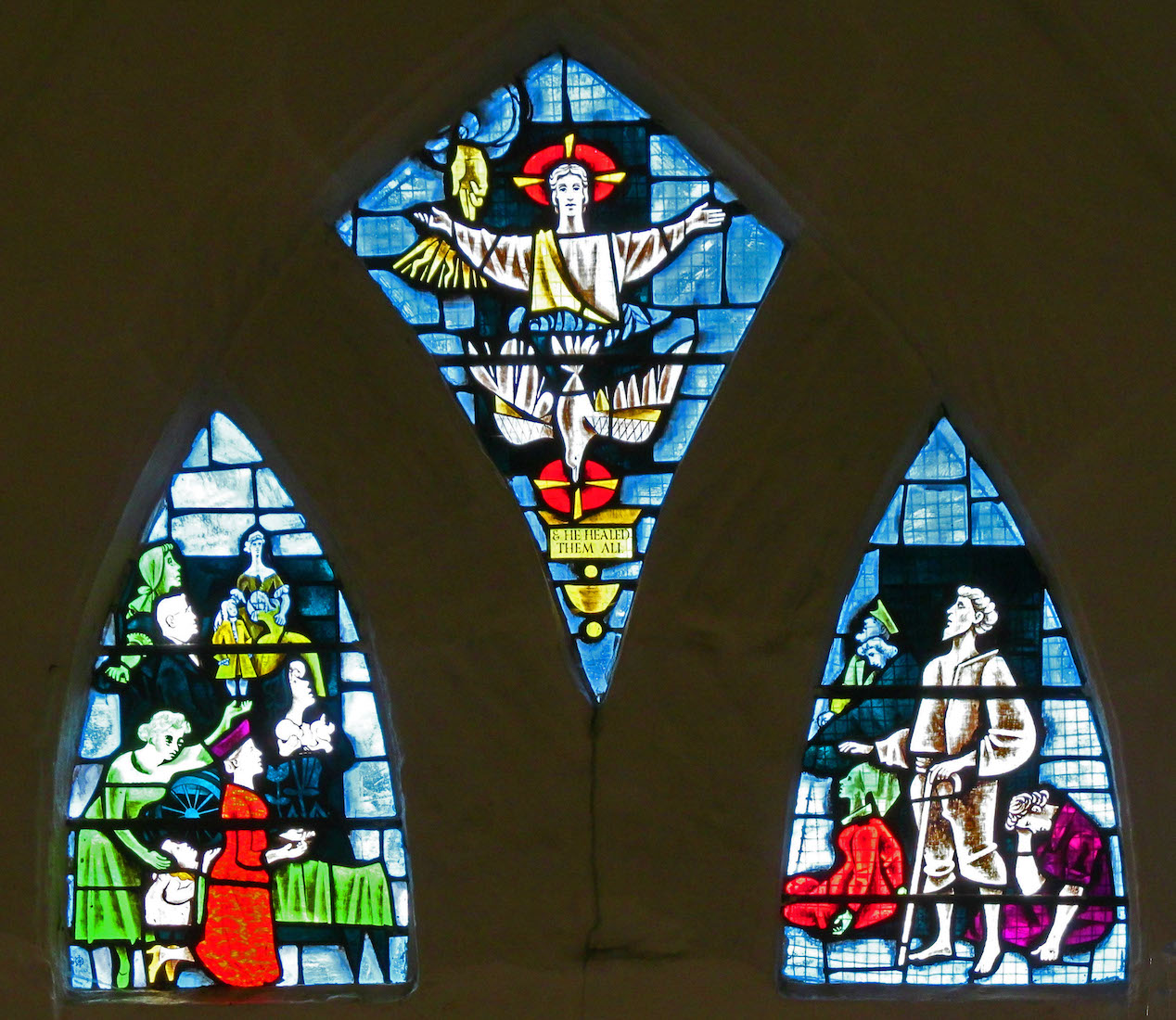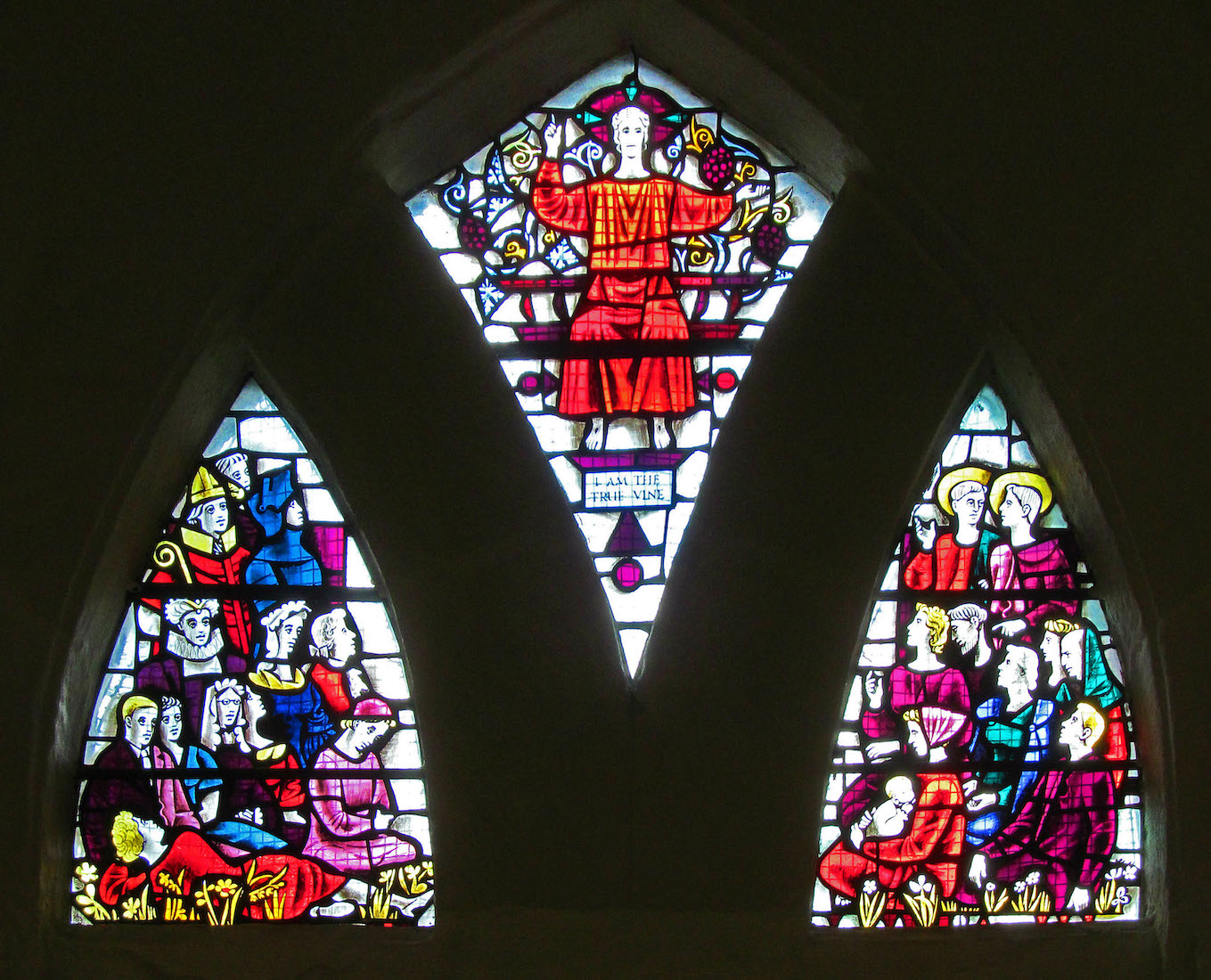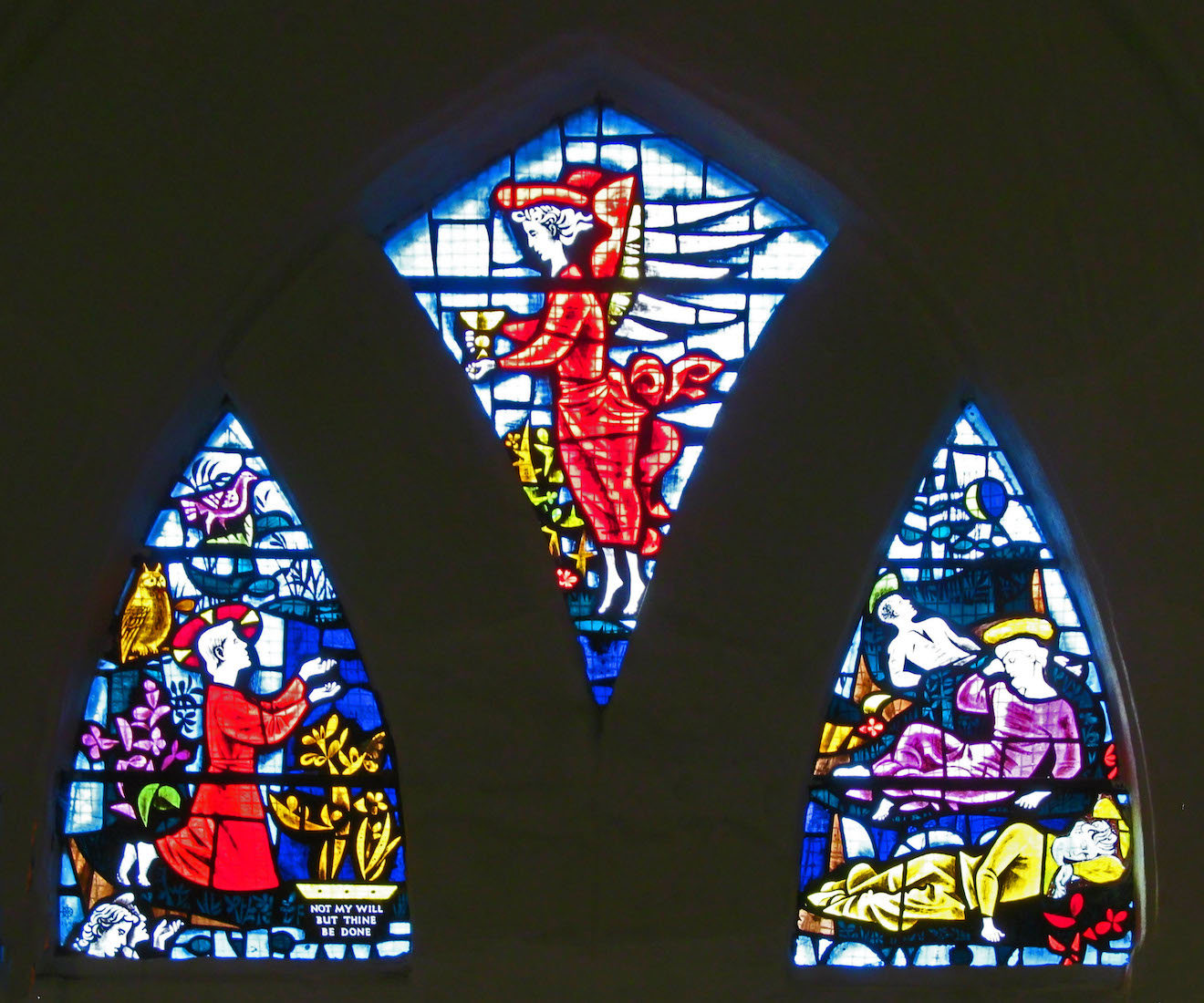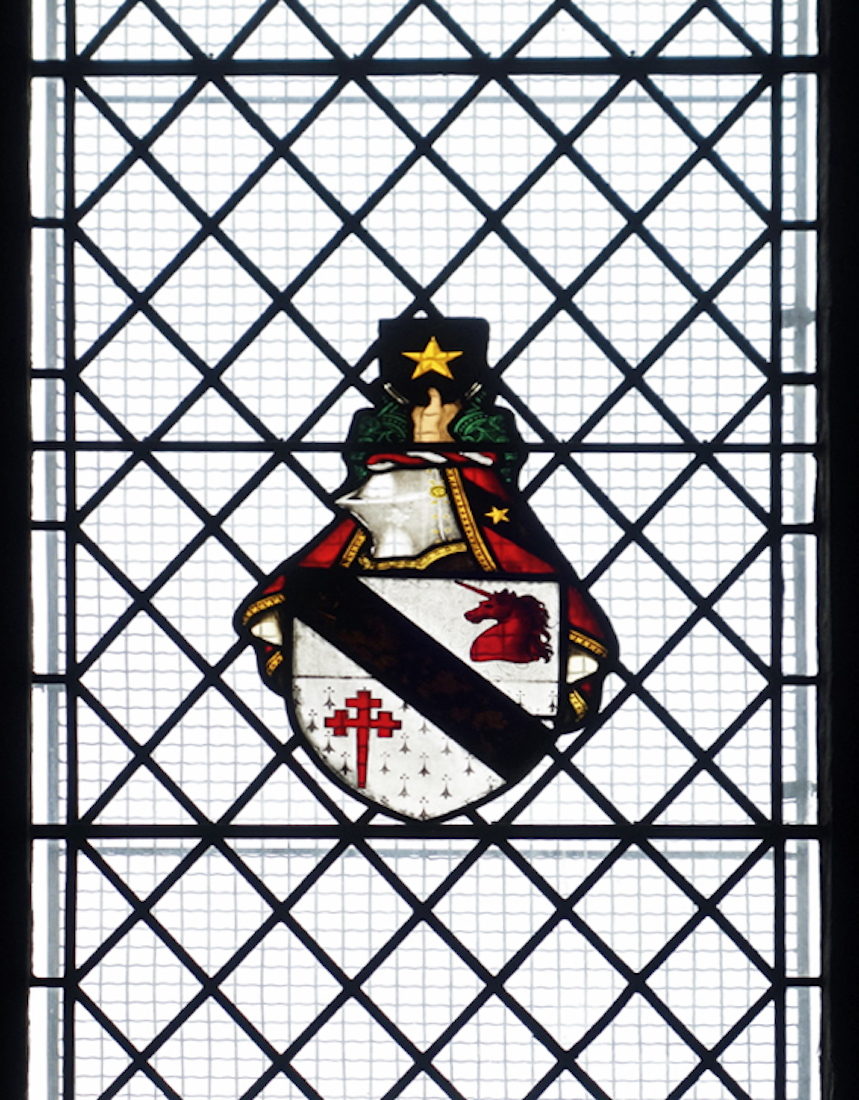
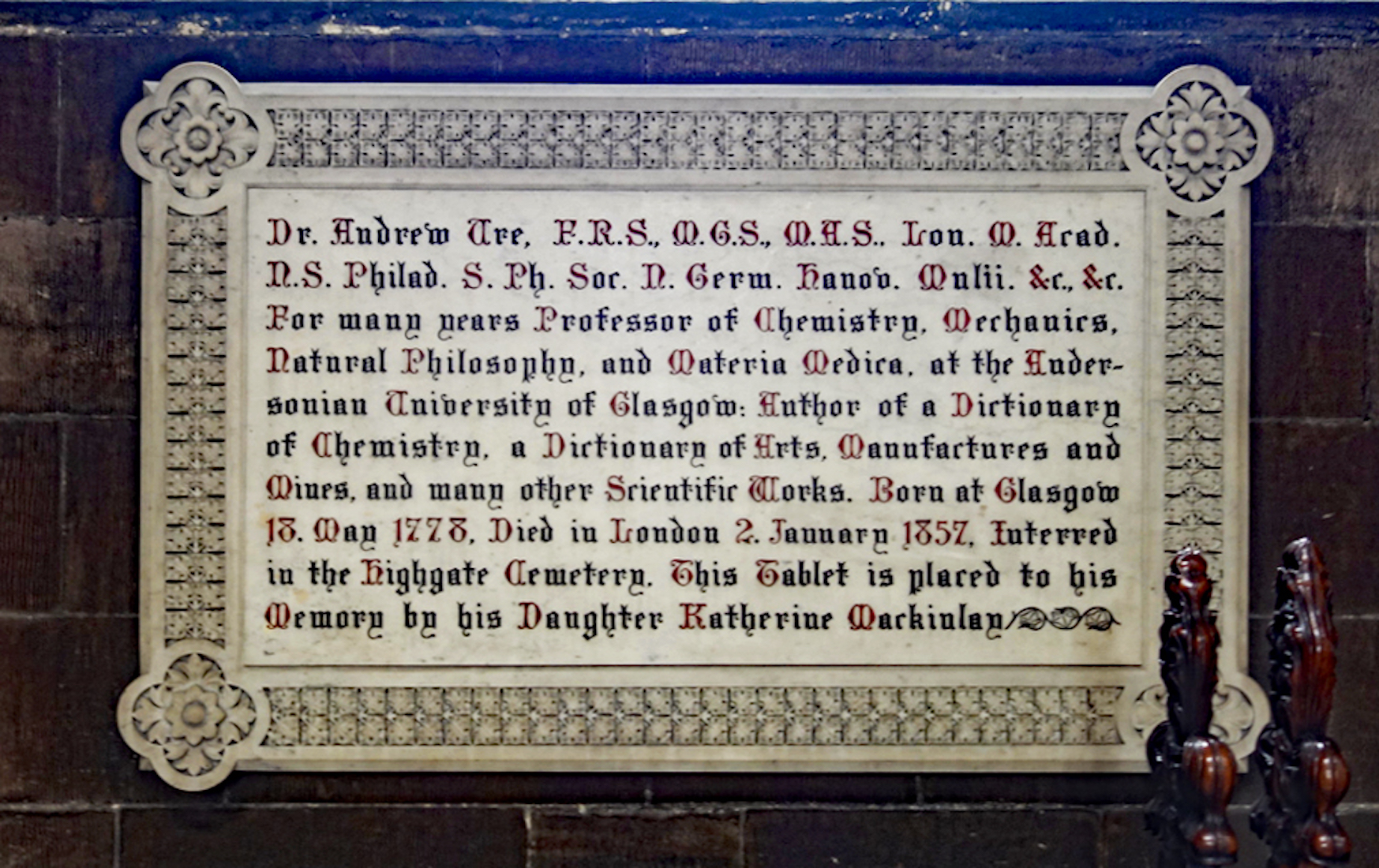
The crest depicted on the window at left is unknown to me. It is not the Clan Ure coat of arms. • The memorial at right remembers Dr Andrew Ure. Andrew Ure FRS (1778 – 1857) was a Scottish physician, and founder of the Andersonian Institution, which became the University of Strathclyde INDEX
N24. MYNTO MONUMENT IS IS
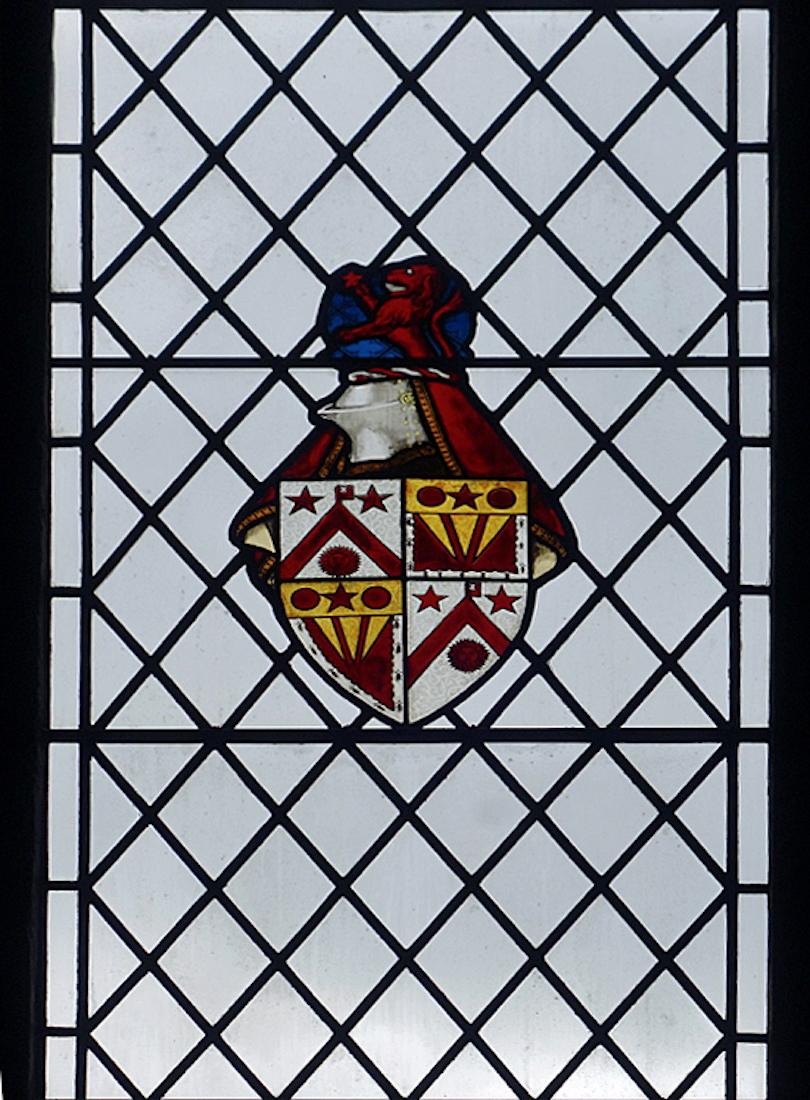
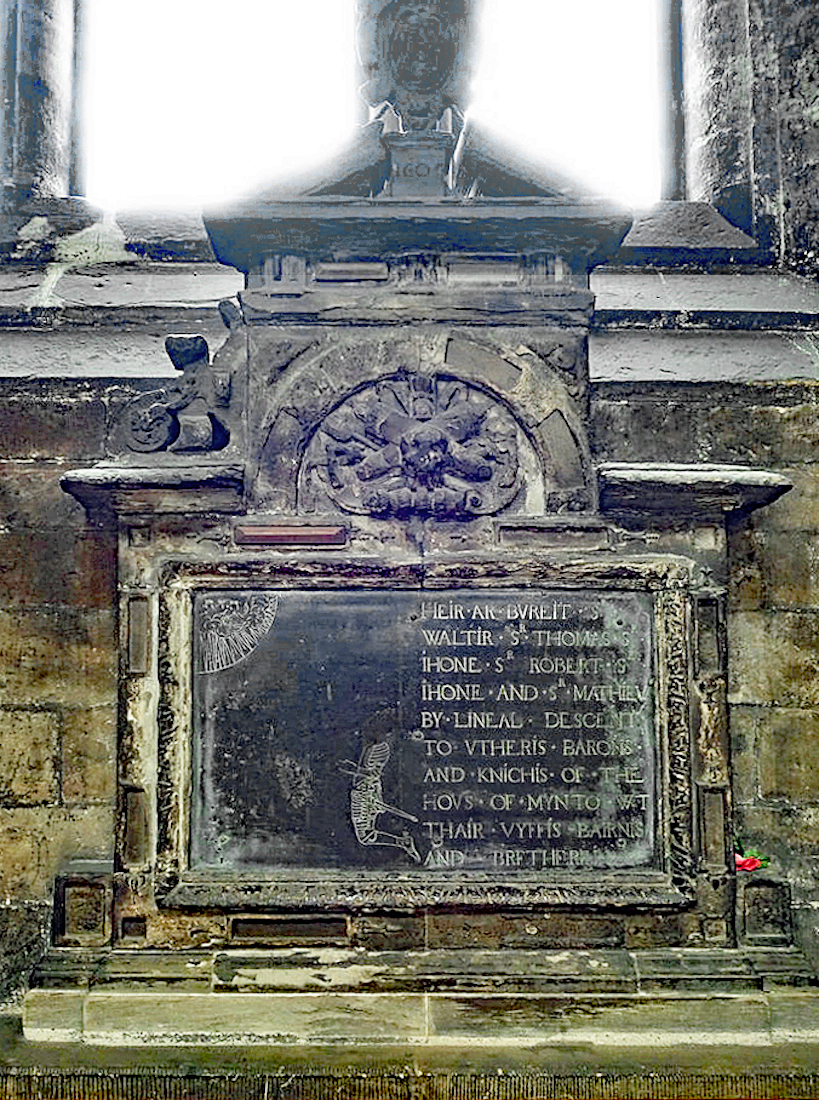
The next window along has another unknown crest, but below (shown at right) is the ancient Mynto Monument dating from 1605, and indicating a burial site. At left a knight is shown, kneeling before the Divine Radiance. The Memorial is devoted to the House of the Stewarts of Minto (Mynto), several of whom served the city as Lord Provosts.
N25. WAR MEMORIAL IS IS
The next window contains three crests, and below is a World War I Memorial. The text reads: ‘To the Glory of God and in Remembrance of the Men of this Congregation who gave their Lives in the Great War.’ A list of names follows, and the text ‘Death is swallowed up in victory’. A tablet at the top shows an angel ministering to a fallen soldier.
N26. SPHINX MONUMENT IS IS
The last in this series is a further window with an unknown crest, and below the dramatic Memorial to the 74th Highlanders who fought at Tel El Kebir in Egypt in 1882.
N27. ROSE WINDOW WH
We have now come to the nave South door, above which is this rose window. This is regarded as one of the better examples of the glass installed in the Cathedral in the late nineteenth century. Although this window was installed during the Munich period, it is in fact made W & J Kier, a Glasgow firm.
N28. CORNER SHOP GC
The Cathedral shop occupies the Southwest corner of the nave. Of interest to us here is the placing of the square baptismal font in the foreground, the three surrounding windows, and several memorials below the windows.
N29. FONT WH
The elegant baptismal font is unfortunately rather tucked away behind the shop fixtures. Its square shape is unusual, and it is nicely carved. There is a scene depicted on each face: the near face shows Jesus being baptised by John the Baptist. The font is where the Christian rite of baptism is carried out, in which a young believer is initiated into the Christian Church and into the wider fellowship of Christ.
N30. SHOP WINDOW IS
This 3-light window, closest to the South door, is one of three Cameronian windows in the ‘Cameronian Corner’. Donated by the regiment in 1958, it is by the artist William Wilson. The Cameronians (Scottish Rifles) was a rifle regiment of the British Army, the only regiment of rifles amongst the Scottish regiments of infantry. In the window, the Regimental badges appear in the tracery, while in the centre light, an open Bible above a sword listing battle honours leads the eye down the window.
N31. HIGHLAND LIGHT INFANTRY MONUMENT IS IS
The second Cameronian window, and in fact the end window on the South wall. The Cameronians were raised in the year 1689 by followers of Richard Cameron. Cameron a Preacher of the Scottish Presbyterian Covenantor faith, his followers were called Cameronians, their regiment became the 26th regiment of foot. The Regiment was raised in upper Lanarkshire, close by the village of Douglas and the Douglas Water, a tributary of the Clyde. • Beneath the window and shown at right is a memorial to the Officers and Men of the Highland Light Infantry.
N32. COCHRANE MEMORIAL IS IS
The third and final Cameronian window is around the corner on the west wall, facing the shop. Beneath it is the attractive memorial to Andrew Cochrane who died in 1777. Andrew Cochrane of Brighouse (1693 – 1777) was an 18th-century tobacco lord and a slave trade owner who served as Lord Provost of Glasgow three times, more than any other person: 1744/5, 1748/9, and 1760/1. Cochrane Street in central Glasgow was re-named in his honour in 1799; the street previously being known as Cotton Street. He may be held in less regard in these days of political correctness!
N33. SOUTH AISLE LOOKING EAST AND TREASURE CHEST IS
This completes our circuit of the nave, and we return, passing by the South door with its impressive treasure chest. This large iron chest was made in Holland in the sixteenth century, and given to the Cathedral by Dr Charles Hepburn. We return along the South aisle to the front of the nave.
N34. CROSSING GC
This little area at the front of the nave is the crossing – the space beneath the central tower – and is very interesting. Ahead is the solid pulpitum or quire screen which separates the nave from the quire beyond. Two small side altars stand in front of it. It is the change in levels which is interesting here. Rising stairs to the sides and ahead take us up to the raised level of the quire. The increased elevation of the choir then allows space for the crypt or ‘lower church’ beneath. And access to the crypt is given by the descending stairs on either side.
N35. PULPITUM WH
The choir screen or pulpitum was constructed at the end of the 15th century and is the only screen of its kind left in any secular (non-monastic) church of Pre-Reformation date in Scotland. Seven pairs of figures at the top of the screen may represent the Seven Deadly Sins or the Seven Ages of Man - or not! The organ console is located in the gallery above. The two altar platforms flanking the entrance were added in 1503 by Archbishop Blacader, whose coat of arms they bear. We now take the downward steps to the right to investigate the ‘lower church’.
BLACADER AISLE
BA1. BLACADER WINDOW AMT G-KT
The steps descend to a landing, and from here we continue straight ahead down further steps to the Blacader aisle – a rather strange part-underground extension of the South transept. We pass on our left a colourful representation of Bishop Blacader himself, surrounded by the architects and builders of the aisle, and created by Harry Stammers in 1960, and come to this attractive space. This aisle was built during the episcopacy of Archbishop Blacader, 1483-1508, whose coat of arms is sculpted on some of the ceiling bosses. The aisle formed the first part of a building scheme, in which a transept was contemplated but never completed. After the Reformation this aisle was the usual burial place for Ministers of the Cathedral. Notice the bottom left hand corner of the window: ‘Robert Blacader, The First Archbishop Glasgow’.
BA2. EAST AISLE AMT WH
A simple small altar is set against the East wall, and the seating arranged around it. A shallow stone bench runs around the outer walls. With windows on three sides, this is a light and pleasing place.
BA3. ALTAR WH AMT
The altar cloth bears the arms of Clan Blackadder having a silver chevron with three roses on a blue shield. • A notable feature of this aisle is the large number of ceiling bosses.
BA4. AISLE EAST WINDOWS WH WH
The windows in the Eastern wall are all by Harry Stammers, and were given by Dr and Mrs Neville Davidson. They show the Annunciation, the Shepherds, the Nativity, the Wise Men, the Presentation in the Temple, and the Flight into Egypt.
BA5. AISLE SOUTH WINDOWS WH WH WH WH
These windows in the South wall contain four small panels of 16th and 17th century glass from private chapels of houses in Switzerland. They were given by Dr and Mrs Davidson, and depict the Last Supper, the Resurrection, and scenes from the Passion and Crucifixion. Comments on the top two ... . In the picture of the Last Supper, Judas is shown standing apart holding his bag of silver. In the top right panel, a robin redbreast is shown near the bottom. An old legend says that the robin’s breast is red because of his association with Christ's death and crucifixion. When Jesus was on the road to Calvary it is said that a robin plucked a thorn from Christ’s temple and a drop of Jesus’ blood fell on the robin’s chest, turning it red.
BA6. WEST AISLE AND BOSSES AMT AMT
The ceiling displays one of the finest collections of carved bosses in Scotland, and well illustrates the variety of designs and conceptions of the medieval craftsman.
BA7. AISLE WEST WINDOWS WH WH WH
The West wall windows are again by Harry Stammers (1961), and given by Miss Scrimgeour. They illustrate Christ’s ministries of healing, teaching and prayer.
BA8. BLACKBURN WINDOW IM
This little Nativity window is by Jemima Blackburn (1865). The window is in memory of her father, James Wedderburn, Solicitor General for Scotland. It is to be found on the West wall at the top of the stairs as we leave the chapel. We now leave the Blacader Aisle, returning to the landing, from where we can gain access to the crypt. [Photo Credit: Ian MacNair: Glasgow Cathedral, The Stained Glass Windows]


